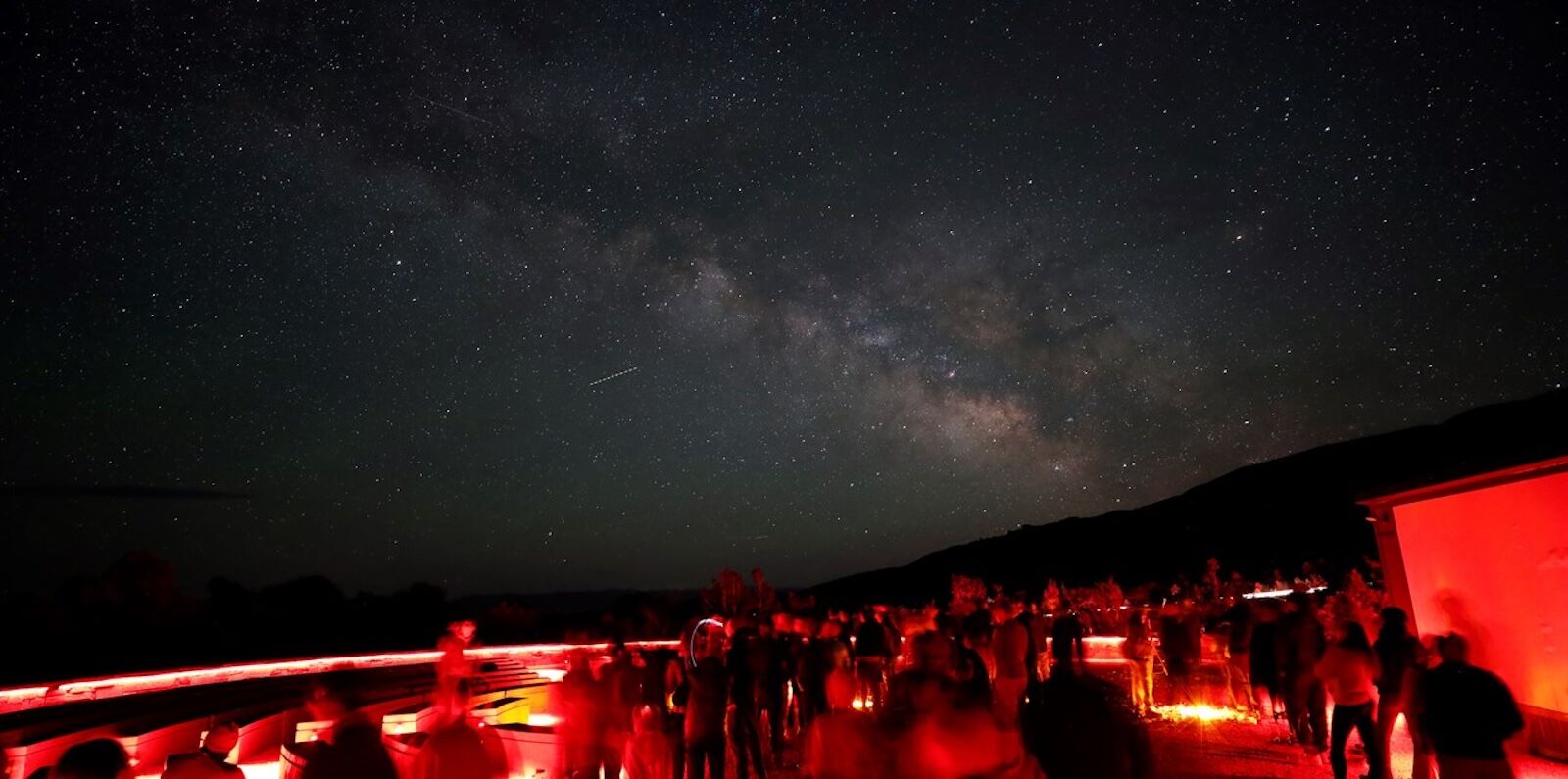Astronomy enthusiasts and travelers who love marveling at the night sky will find no shortages of astronomy events worth traveling for in 2025. Not only will there be a double lunar eclipse, but it’s also expected to be the peak of an 11-year solar cycle, in which sunspot numbers, solar flares, and coronal mass ejections are exceptionally high — which means brighter and more frequent aurora borealis, or northern lights, displays.


The Best Night Sky Events, Festivals, and Celebrations Worth Traveling for in 2025
From the deserts of Utah to the pristine wilderness of Canada, there are plenty of place to go to either watch night sky events on your own, or celebrate with hundreds of other enthusiastic stargazers. In 2025, you could attend lectures and presentations from astronauts, learn to take dazzling photos of the stars in an astrophotography class, or visit a national park and use a high-powered solar scope to see the sun like never before.
To help with your night sky trip planning, Matador Network rounded up not just the astronomical phenomena worth traveling for in 2025 but also the best night sky events and national park stargazing festivals happening in the coming year.
In a year full of significant astronomical phenomena, these are the festivals and night sky events that stand out, each promising an experience that is as much about place as it is about the magic above.
We hope you love the spaces and stays we recommend! Just so you know, Matador may collect a small commission from the links on this page if you decide to book a stay. Listed prices are accurate as of the time of publication.
Jump to:
- The 10 best astronomy events in 2025 worth traveling for
- The best astronomy events at national parks worth the travel
- Global astronomy festivals events to attend in 2025
The 10 best astronomy phenomena worth traveling for in 2025
The year 2025 promises to be a remarkable one for night sky enthusiasts, offering a lineup of celestial events that will captivate stargazers around the world. Not only is it the maximum of Solar Cycle 25 (making it an excellent year for aurora chasing), but eclipses will also take center stage. Two lunar eclipse in spring and fall will drape the Moon in a coppery-red hue, and travelers will be able to see meteor showers such as the Perseids in August and the Geminids in December without much moonlight, making for excellent meteor-watching conditions.
March 14: Total Lunar Eclipse (Blood Moon)
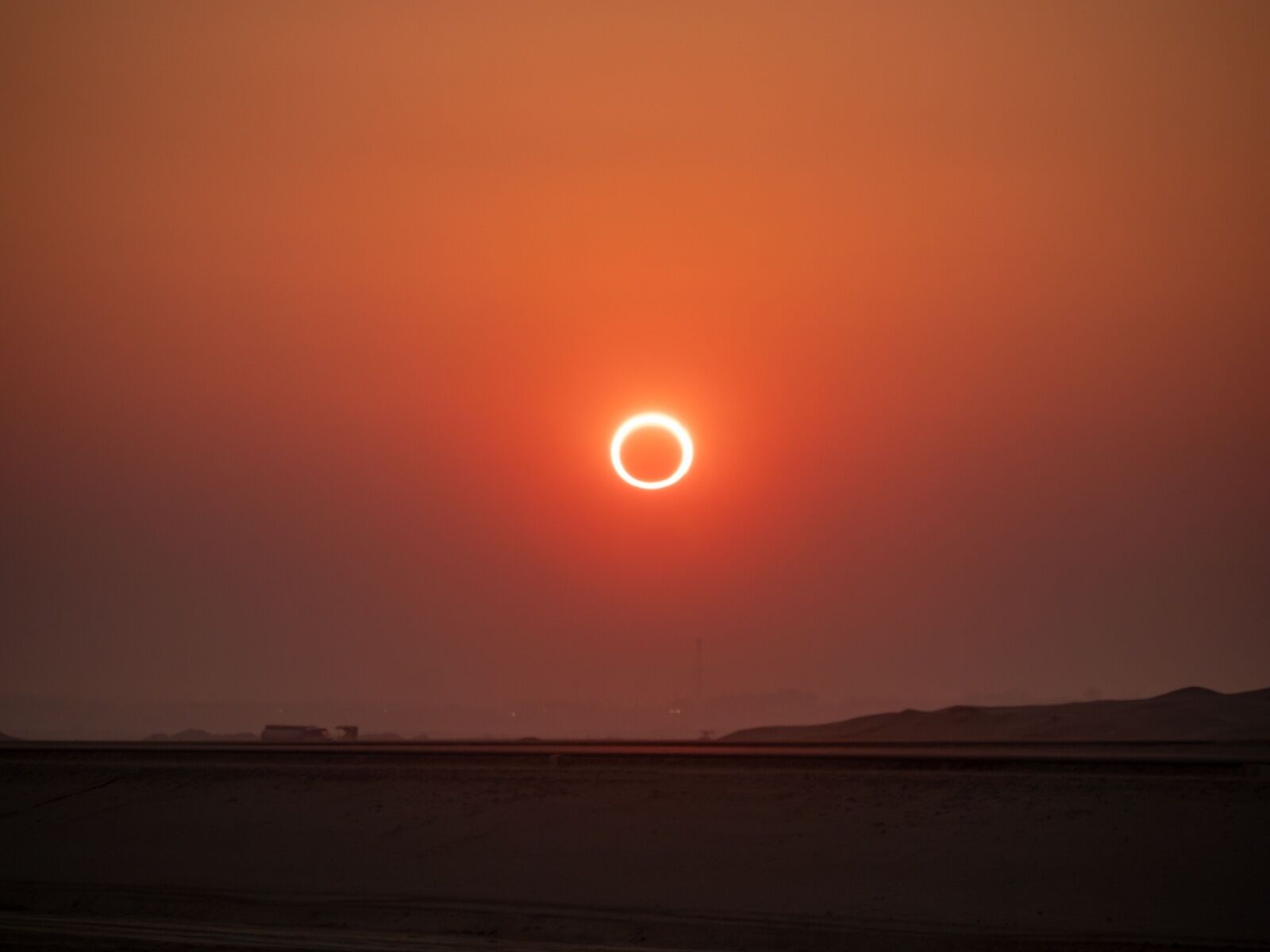
Photo: Hyserb/Shutterstock
- Recommended viewing location: Atacama Desert, Chile
- Where to stay: Hotels in San Pedro de Atacama
The Blood Moon on March 14, 2025, is shaping up to be the best lunar eclipse of the year and a must-see event for skywatchers. A Blood Moon occurs during a total lunar eclipse, in which the Earth’s shadow completely covers the Moon. This gives the Moon a deep red or orange hue. What makes the March event particularly special is its timing, visibility, and ideal viewing conditions.
Unlike other lunar eclipses later in the year, the March 2025 Blood Moon will be perfectly visible across the Americas, Europe, and parts of Africa, allowing a large portion of the world to experience it in its entirety during convenient evening hours. Totality (when the Moon is fully in Earth’s shadow) will last for approximately 1 hour and 12 minutes, making it an extended and dramatic celestial show.
It will be at a relatively high altitude during totality for many observers, meaning it will appear larger and brighter than usual. Atmospheric conditions in March also tend to mean clear skies in many regions, and this Blood Moon will be easily visible to the naked eye – though a pair of binoculars or a small telescope will show more detail.
For optimal viewing, head to a dark-sky destination away from city lights. For a truly epic view, consider taking a trip south to the Atacama Desert in Chile, where stargazing tours with experts are readily available. You’ll find stargazing tours that leave from the town of San Pedro de Atacama, but nearly every hotel in the Atacama Desert will offer on-site stargazing, as it’s widely considered one of (if not the) best night sky-viewing destinations on the planet.
March 29: Partial solar eclipse
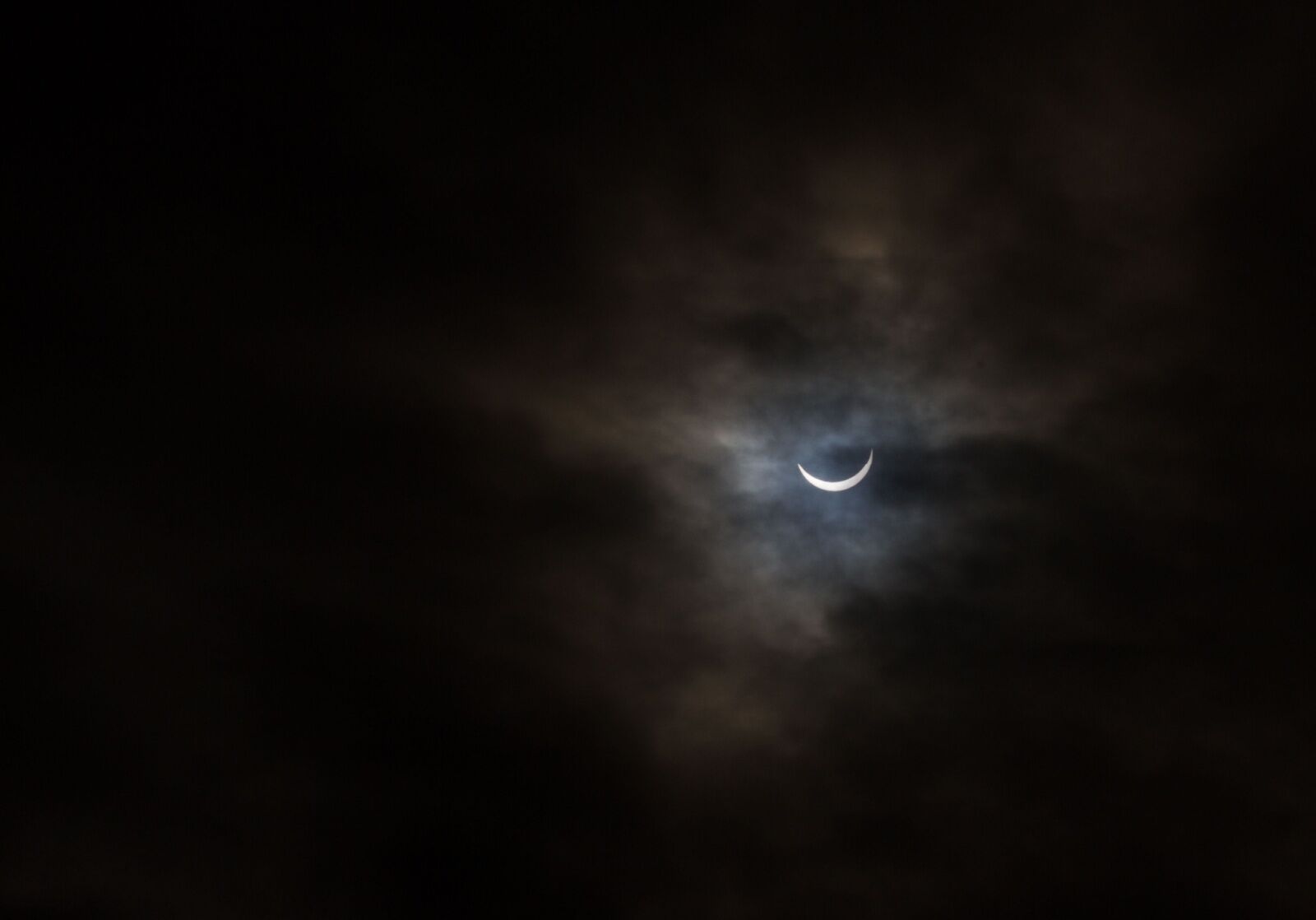
Photo: Lillian Tveit/Shutterstock
- Recommended viewing location: Iceland or Norway
- Where to stay: The best Airbnbs in Lofoten Islands, Norway; The best northern lights Airbnb in Iceland
A partial solar eclipse occurs when the Moon passes between the Earth and the Sun, but only partially covers the Sun (as seen from certain locations). The shadow creates a striking effect where a portion of the sun appears to have a “bite” in it, creating an eerie dimming of natural light in the middle of the day. Partial solar eclipses happen more often than total solar eclipses, but they’re still impressive to see.
If you want to witness this event, you’ll need proper solar viewing equipment, such as eclipse glasses or a telescope with a solar filter. Never attempt to look directly at the Sun without the right protective tools, as it can cause permanent eye damage.
Late March’s particular eclipse will be best visible across parts of Northern Europe, Iceland, and Western Asia, where observers can experience as much coverage as possible. In these regions, up to 40-60 percent of the Sun will be obscured by the Moon.
Late March often provides relatively clear skies in higher latitudes like Iceland and Norway, as well as the chance to catch the Aurora Borealis (northern lights), which are usually still active in March. One of the best places to witness the partial eclipse (and easiest places to reach) is Iceland, especially in the southern parts of the country (Hotel Ranga has the country’s only public observatory, as well as a northern lights wake-up call). The Lofoten Islands in Norway could also be a good pick, and plenty of evening stargazing tours are available from tourist towns like Svolvær.
April 22: The Lyrids Meteor Shower
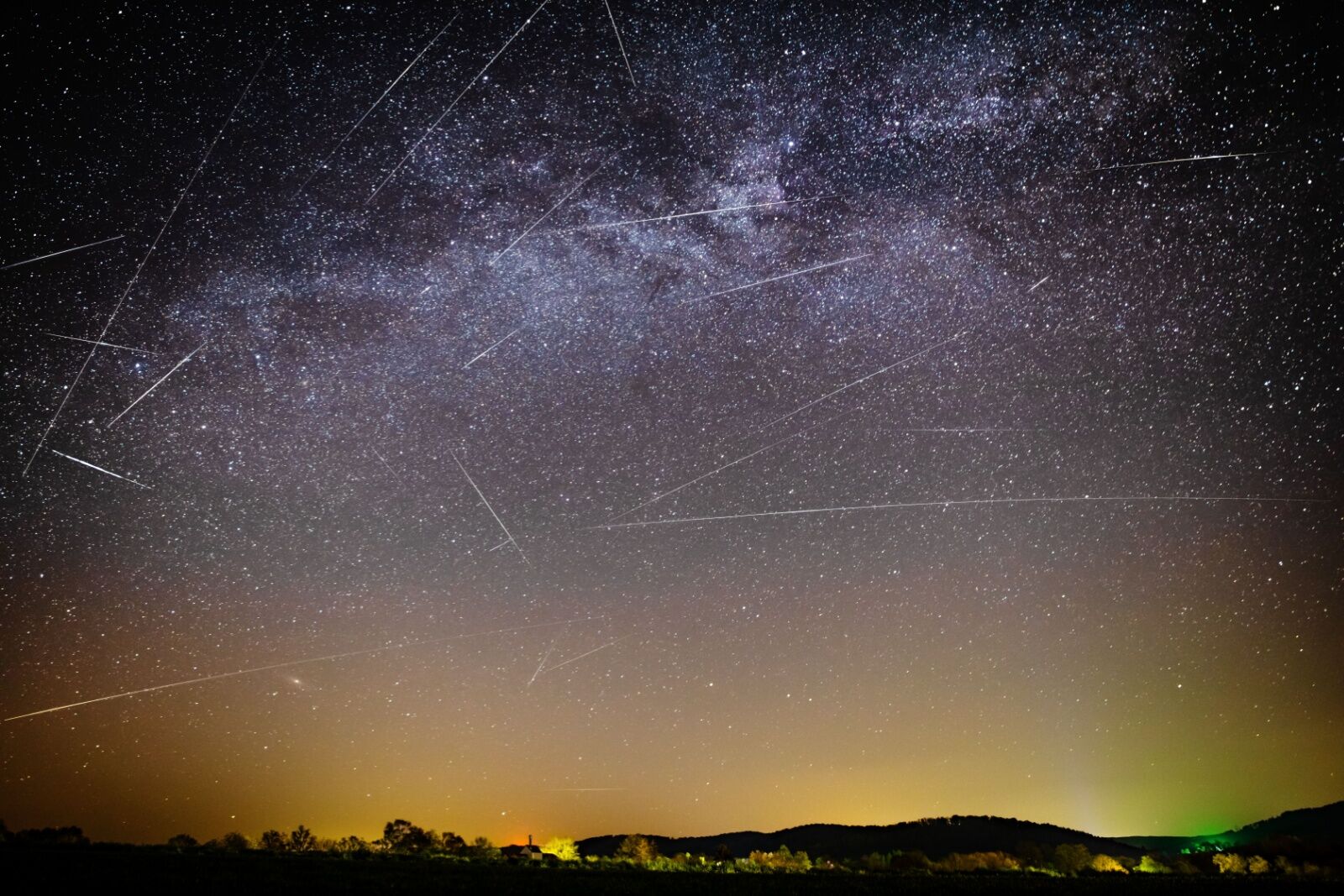
Photo: Lillian Tveit/Shutterstock
- Recommended viewing location: Joshua Tree National Park, California
- Where to stay: The best Airbnbs in Joshua Tree, the best Joshua Tree Airbnbs for families and groups
The Lyrids Meteor Shower is one of the oldest known meteor showers, with observations dating back over 2,600 years. It happens in late April and is caused by Earth passing through a debris field left from the Thatcher comet, which passed through the solar system in 1861. When the debris enters our atmosphere, it burns up and creates bright streaks of light across the night sky.
The 2025 Lyrids show will peak on the evening of April 22, going into the early morning on April 23. In ideal conditions, you could see up to 20 meteors per hour. Fortunately, the Moon will be in a waxing crescent phase, setting early and leaving the skies dark for prime viewing.
The Lyrids are known for brief but vivid bursts, occasionally producing meteors with bright trails that linger in the sky for several seconds. Meteors can appear in any part of the sky, though the shower radiates from the constellation Lyra (hence the name). The Lyrids are best observed with the naked eye, as telescopes and binoculars will limit your field of vision. You may want to spring for an ultra-luxe stargazing camp chair before April, as you’ll want to stare at the sky for 20 to 30 minutes to let your eyes properly adjust to the darkness.
The best spots to view the meteor shower will be anywhere with dark skies in the mid-latitudes (not too high in elevation), as that will afford the best vantage point of Lyra. Joshua Tree National Park in California checks all those boxes, and also offers perfect weather in mid-spring.
June 21: The Summer Solstice

Photo: PhotoChur/Shutterstock
- Recommended viewing location: Denali National Park, Alaska
- Where to stay: The best Airbnbs within driving distance of Denali National Park
Okay, it’s not a night sky event, but it’s definitely worth making travel plans around it. June 21 marks the point when the sun is at its northernmost point in the sky, signalling the official start of summer in the Northern Hemisphere (and start of winter in the Southern Hemisphere). It also makes it the longest day of the year for those north of the equator, and it’s been a reason to celebrate for centuries around the world.
In Scandinavia, Midsummer festivities will light up the countryside, with bonfires, flower crowns, and traditional dances. Iceland’s capital, Reykjavik, is known for its Solstice Festival, where music performances and art installations stretch well into the endless daylight of the Midnight Sun. In England, thousands will gather at Stonehenge to witness the Sun’s rays pierce through the ancient stones.
Travelers looking to make the most of maximum daylight hours should consider outdoorsy destinations with rich natural beauty, especially for anyone planning to camp, glamp, or stay in an eco-lodge. Alaska’s Denali National Park will be one of the best places in the world to revel in near-continuous sunlight. The sun will rise at 3:55 AM on June 21 in Denali, and set at approximately 12:30 AM the following morning, making it an ideal time for hiking, wildlife viewing, and photography in the park. The park’s 49th State Brewing usually has a solstice party, too.
August 12: Conjunction of Venus and Jupiter
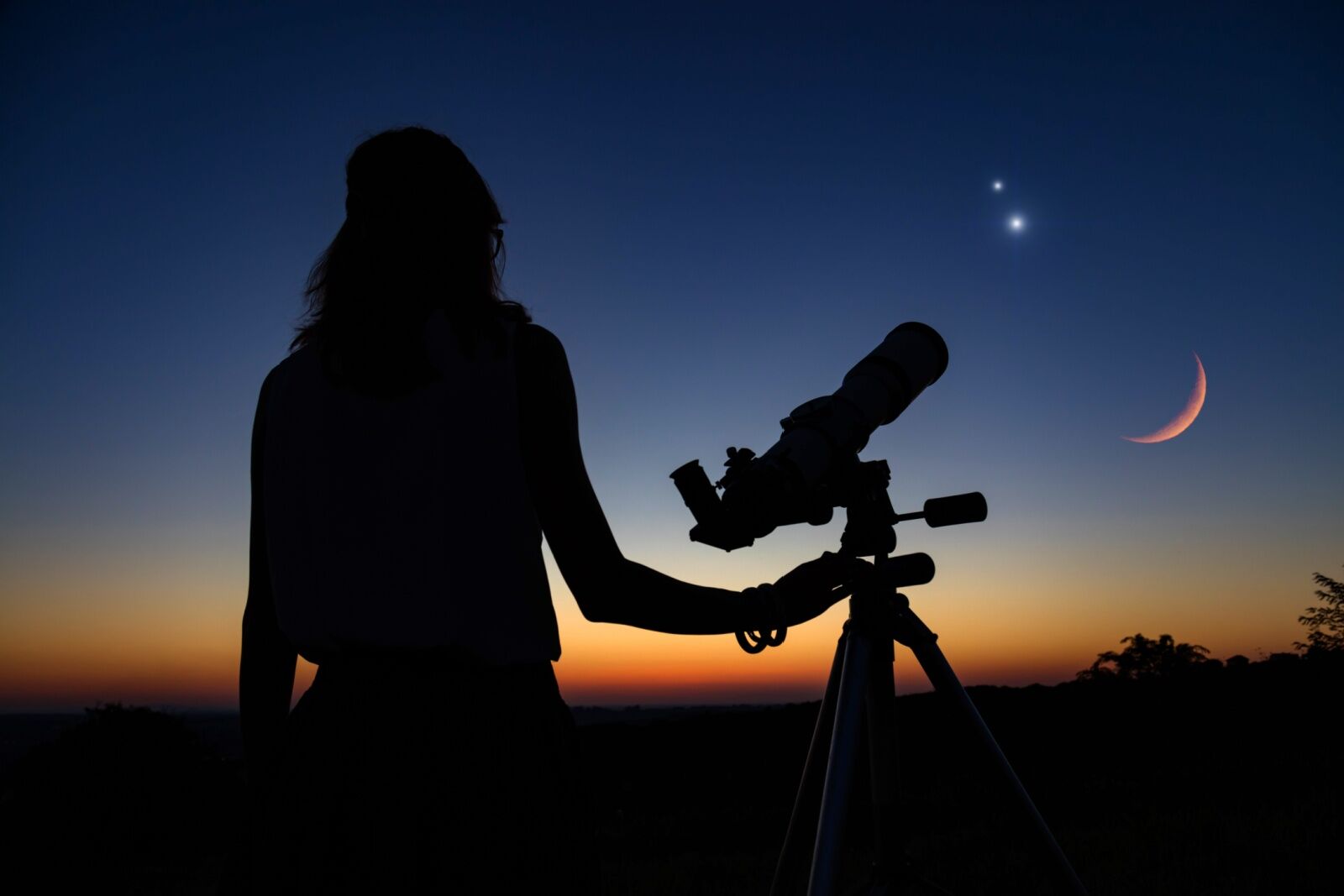
Photo: AstroStar/Shutterstock
- Recommended viewing location: Any dark sky area
- Where to stay: The best Airbnbs for stargazing across the US
In mid-August, the two brightest planets in the sky will appear exceptionally close together, at least from our perspective on Earth. It’s a result of their orbital paths aligning in such a way that they look to us like one single bright point of light.
On August 12, you’ll want to look toward the west shortly after sunset. If you can see two separate lights, Venus will be the brighter of the two, with a characteristic silvery-white glow, while Jupiter will appear slightly dimmer and be a warmer hue. You’ll be able to see it without a telescope, though if you have one, you may be able to see the planets in more detail, potentially even seeing Jupiter’s largest moons (it has 95 of them).
For the best experience, astronomers recommend finding a location with minimal light pollution and an unobstructed view of the horizon. It may be a good day to do a summer camping or backpacking trip to one of the country’s best night sky campgrounds, as there’s no one geographic location that’ll be better than another, as long as the weather and light conditions are correct.
August 12 and 13: Perseid Meteor Shower
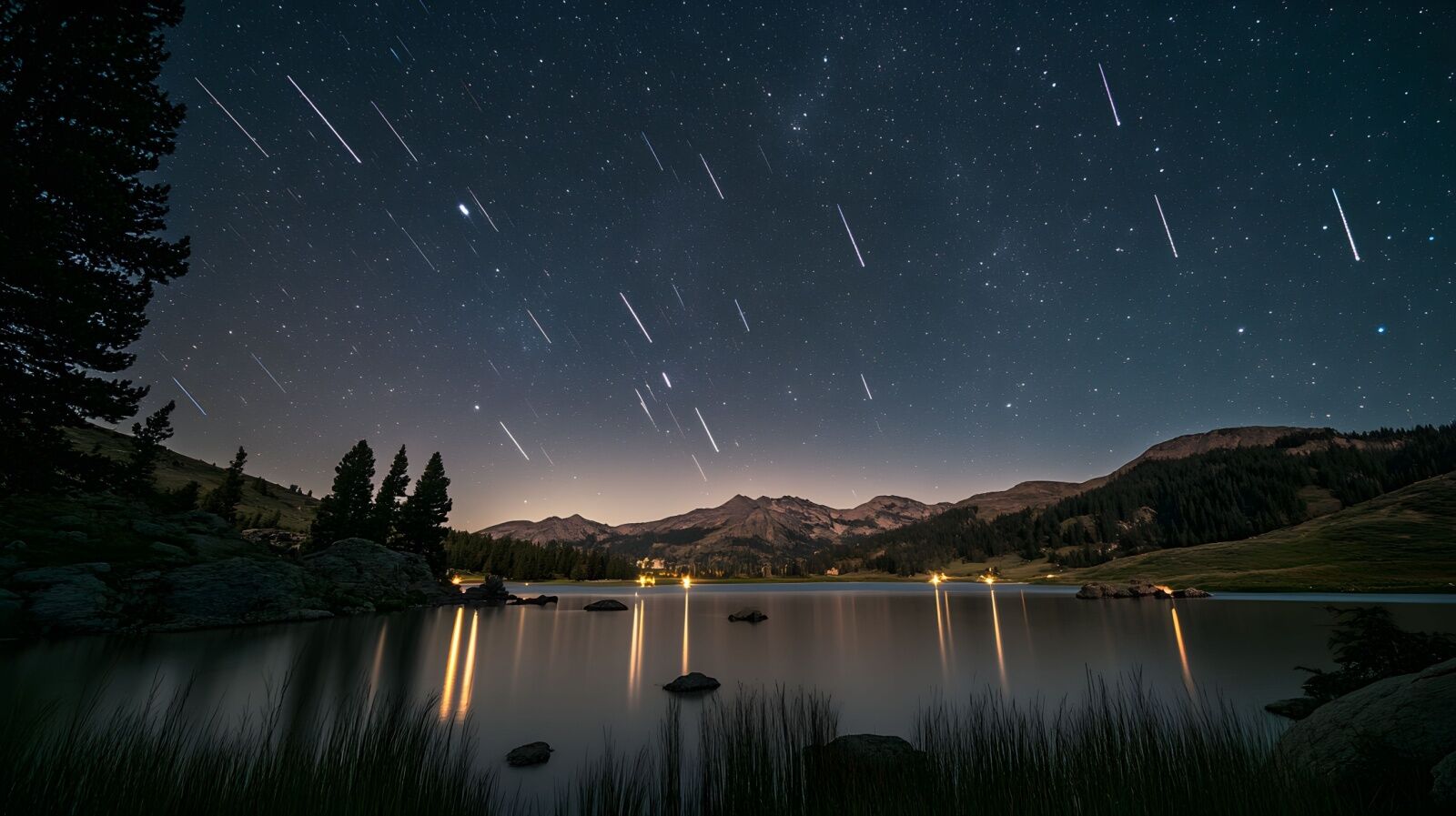
Photo: Jan Garbers/Shutterstock
- Recommended viewing location: Great Basin National Park, Acadia National Park
- Where to stay: The best Airbnbs around Acadia National Park
The Perseid Meteor Shower will peak on the night of August 12 and into the early hours of August 13. Expect a high rate of bright, fast-moving meteors that originate from the debris trail left by the Swift-Tuttle comet.
In 2025, the Perseids will benefit from nearly ideal conditions, with the Moon only at about 19 percent illumination. So the sky will be mostly free of moonlight during the peak of the shower, allowing night sky watchers to fully appreciate the event’s brilliance. In ideal conditions, you can see up to 100 meteors per hour at the shower’s peak. Most will be fast and quick, but some could have long, persistent trails (or burst into fireballs). The meteors will be visible across most of the sky, but will be centered around the Perseus constellation to the northeast. Patience is key, as the shower’s activity fluctuates over the course of the night.
As with the conjunction of Venus and Jupiter, anywhere with wide-open views and minimal light pollution should be good. West Coasters may want to head to Nevada’s remote Great Basin National Park, one of the few national parks in the west where you can always get a campsite, even on peak summer weekends (and the Great Basin Star Train is pretty cool, too). East Coasters should make reservations as soon as possible to stay near Acadia National Park in Maine, as the park’s clear summer skies make it a popular spot for night sky viewing.
September 7: Total Lunar Eclipse
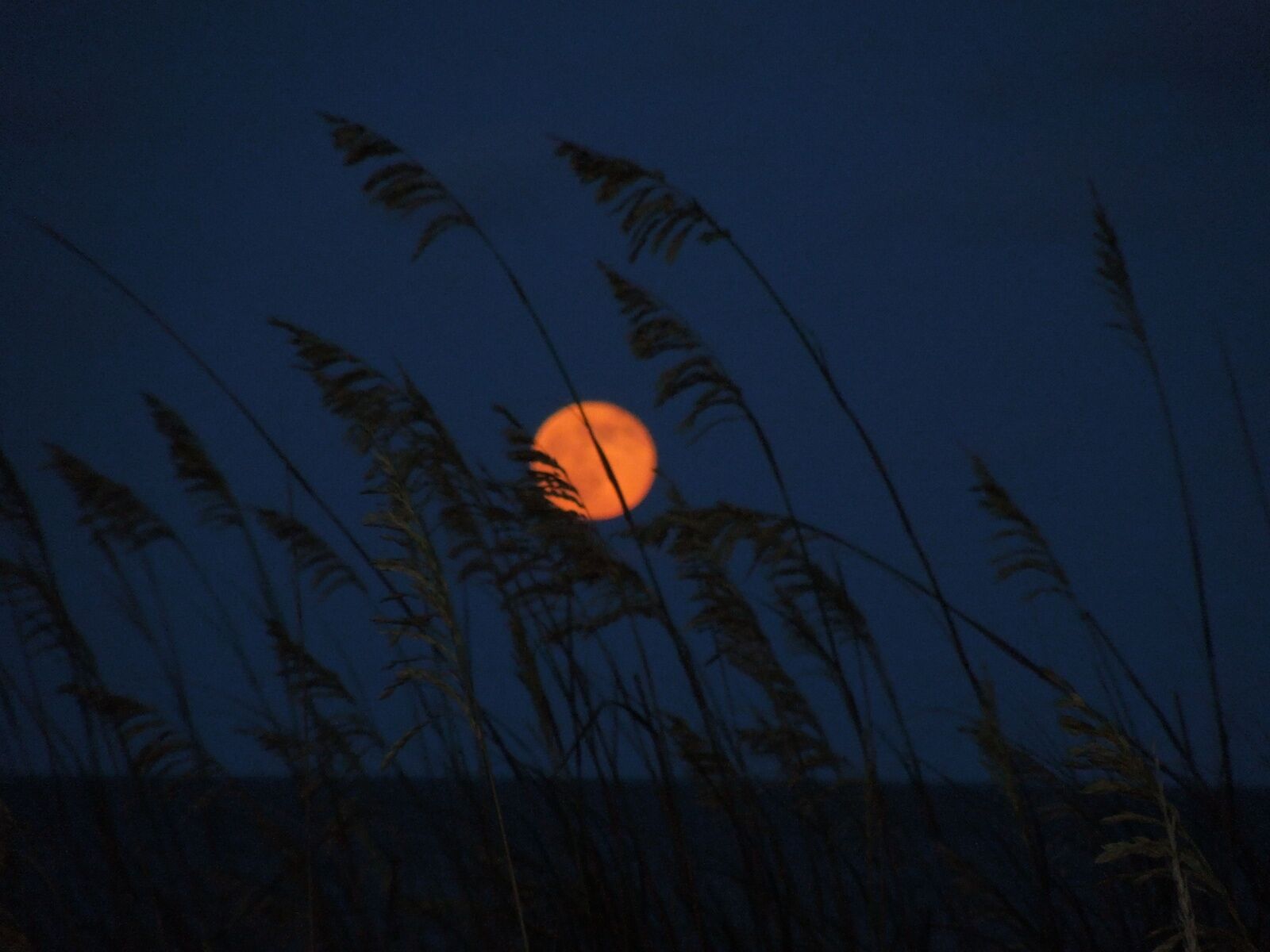
Photo: Caroline Elliott/Shutterstock
- Recommended viewing location: East Africa, northern India, deserts in the Middle East
- Where to stay: The best Airbnbs around Acadia National Park
You’ve got plenty of time to make travel plans to catch the September total lunar eclipse – and that’s a good thing if you live in North America, since you’ll have to travel to see it. During this eclipse, the Earth will align perfectly between the Sun and the Moon, creating a reddish “blood” hue caused by Earth’s atmosphere scattering sunlight.
This eclipse will be visible across Europe, Africa, Asia, and Australia. Observers in those parts of the world will have the best views, with the total phase of the eclipse lasting approximately 1 hour and 25 minutes. National parks and remote wilderness areas in East Africa will have a great view, such as the Serengeti in Tanzania or the Maasai Mara in Kenya. Most of India will have a perfect view, but you’ll want to go somewhere without much light pollution, like Ladakh, in northern India. In the Middle East, destinations include the Al Hajar Mountains in Oman or AlUla in Saudi Arabia, which is the continent’s first official dark sky park (and has some of the coolest desert hotels in the world).
October: the Aurora Borealis
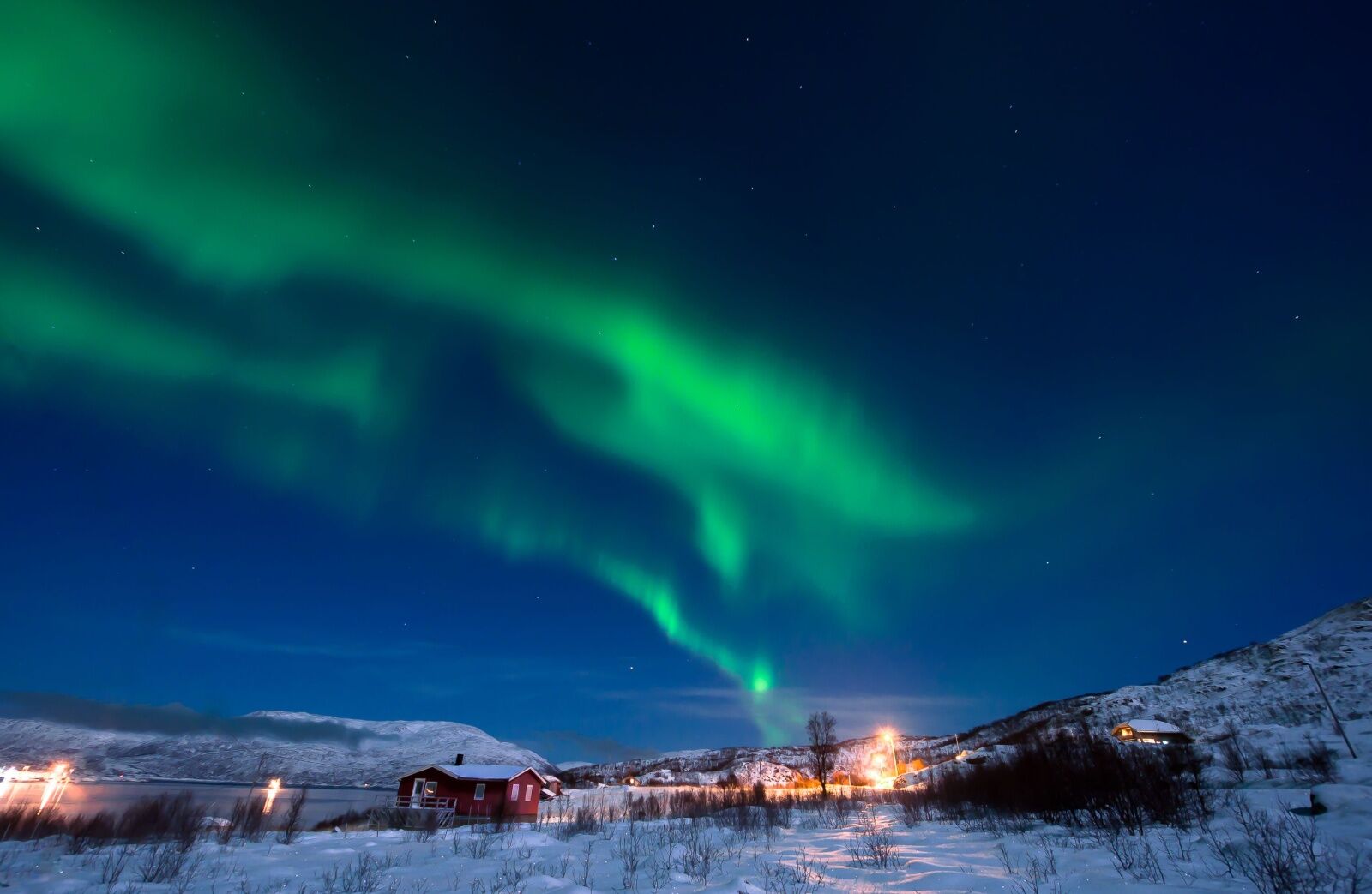
Photo: ZinaidaSopina/Shutterstock
- Recommended viewing location: Anywhere known for the northern lights
- Where to stay: Köngäs in Finland, Hotel Ranga in Iceland, The best northern lights Airbnbs, the best Airbnbs in Alaska
2025 is expected to be a significant year for viewing the aurora borealis, or northern lights. They’re tied to an 11-year solar cycle that affects the frequency and intensity of auroras. In 2025, the Sun will be approaching the peak of the solar cycle (called the “solar maximum,”) through late 2025 and into early 2026. During that time, the sun produces more intense bursts of energy and charged particles that interact with Earth’s magnetic field, causing the streaks of color through the sky. When that activity intensifies, the region in which the aurora is visible expands, making the northern lights visible in destinations further south than normal.
Travelers can take advantage of that by traveling in 2025 to places known for aurora viewing, where your chances of seeing them are higher, even if you can only spend a night or two looking up. Regions like Alaska, Canada, Iceland, Norway, Sweden, and Finland are all known for exceptional viewing. But it’s possible that areas further south, like parts of Scotland or the northern United States, may be able to see auroras during the strongest geomagnetic storms. Keep an eye on NOAA’s Aurora Tracker to stay up to date. In 2025, October will likely be the best time to see them, when Earth’s orientation enhances geomagnetic activity.
November 23: Saturn’s Rings Edge-On
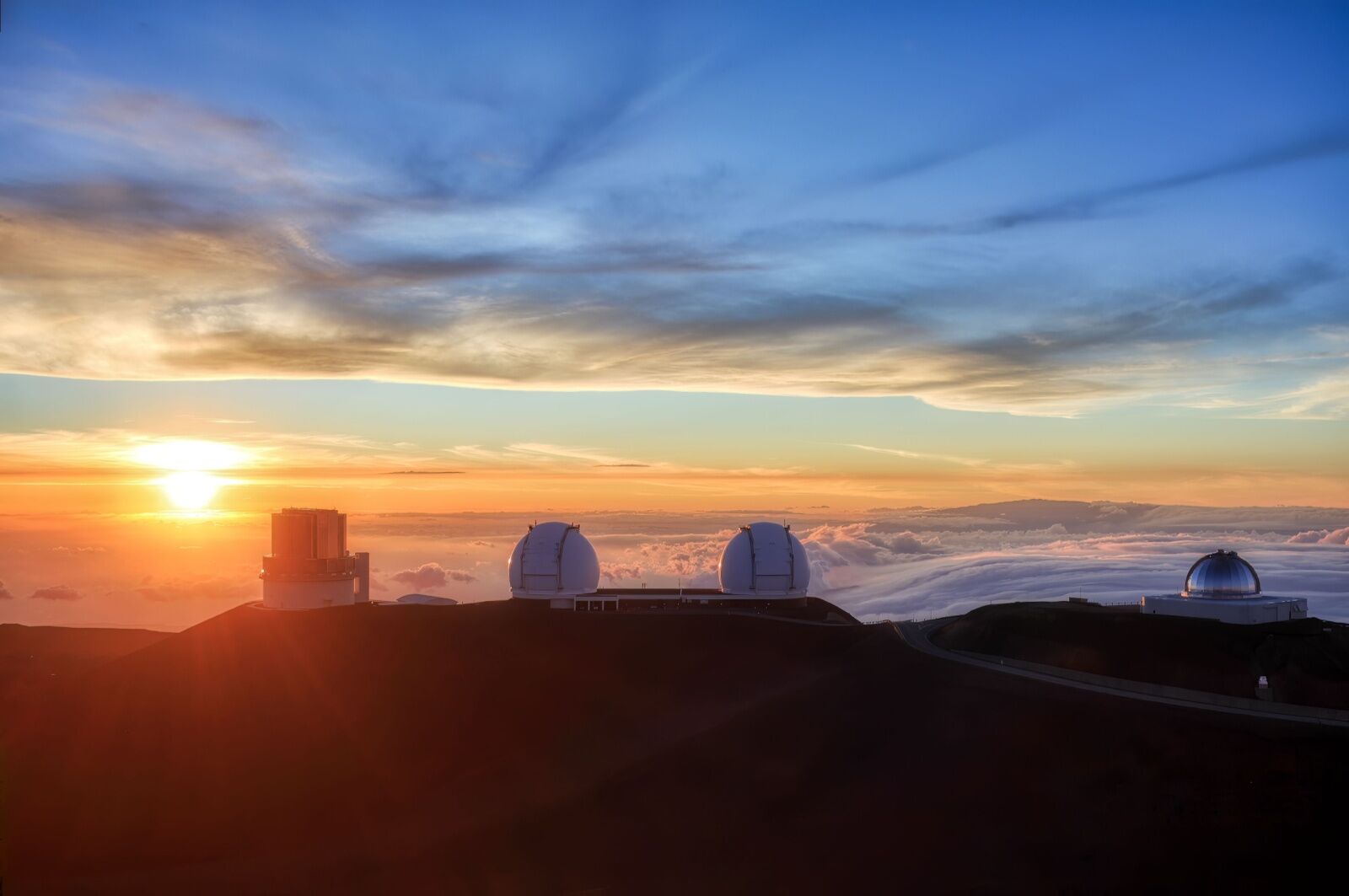
Photo: Izzet SaferM/Shutterstock
- Recommended viewing location: Mauna Kea, Hawaiʻi
- Where to stay: The best Airbnbs on Hawaii’s Big Island
“Saturn’s Rings Edge-On” refers to a phenomenon that occurs approximately once every 15 years, when Saturn’s rings appear to vanish or nearly disappear when viewed from Earth. This happens because Saturn’s rings are incredibly thin (only about 10 meters thick) relative to their expansive diameter (more than 270,000 kilometers). During this event, the rings are oriented on an edge to our line of sight from Earth.
The rings become extremely difficult to see with telescopes, giving the appearance of a nearly ring-less Saturn. It occurs twice every year it happens, and this year, amateur astronomers can see it in March and November. However, Saturn will be behind the sun on March 12, 2025, meaning it’ll be difficult to see. So late November is actually a better chance.
You’ll need a decently high-powered telescope to see it, and as usual, will want a destination with a high altitude, dry climate, and clear skies. We recommend heading to the Mauna Kea Observatory on the Big Island in Hawaiʻi. The actual observatory is closed to the public, but the welcome center isn’t. If you have your own telescope, you can visit for the nightly stargazing sessions. If you don’t have a telescope, consider registering for the March or November monthly stargazing events.
Dec 13: Geminids Meteor Shower
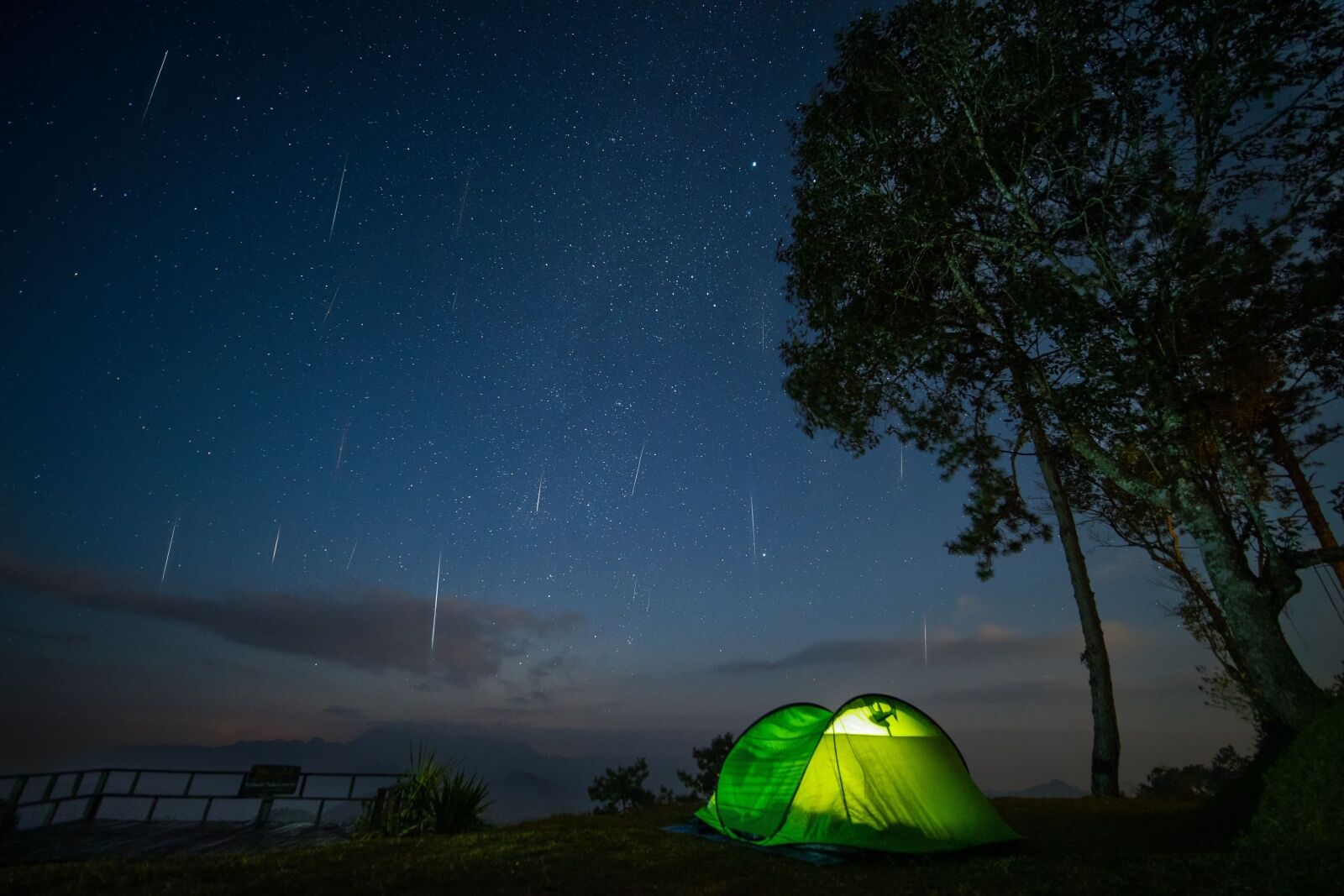
Photo: Take Photo/Shutterstock
- Recommended viewing location: Sedona, Arizona
- Where to stay: The best Sedona Airbnbs with incredible access to the outdoors
The Geminids Meteor Shower is reliably one of the most spectacular celestial displays of the year and should peak on the night of December 13 into the morning of December 14. The shower originates from the debris trail of 3200 Phaethon (an asteroid, not a comet), and often produces up to 120 meteors per hour under ideal conditions. The streaks are often in vibrant colors of yellow, green, and blue, and move slower than other meteor showers, making them easier to observe.
The 2025 Geminids will take place during favorable conditions, when the waning crescent of the Moon will create minimal light interference. The show will likely not really get going until at least 10 PM, when the point the meteors originate from (called a “radiant”) is at the highest point in the sky.
To fully enjoy the Geminids, stargazers should find a viewing location far from city lights, ideally in the Northern Hemisphere. The desert surrounding Sedona could be a great spot, particularly around the Fay Canyon Loop and Two Trees Observation Area (and the weather in December in Sedona is pretty darn nice, too).
Night sky events in national parks worth traveling for
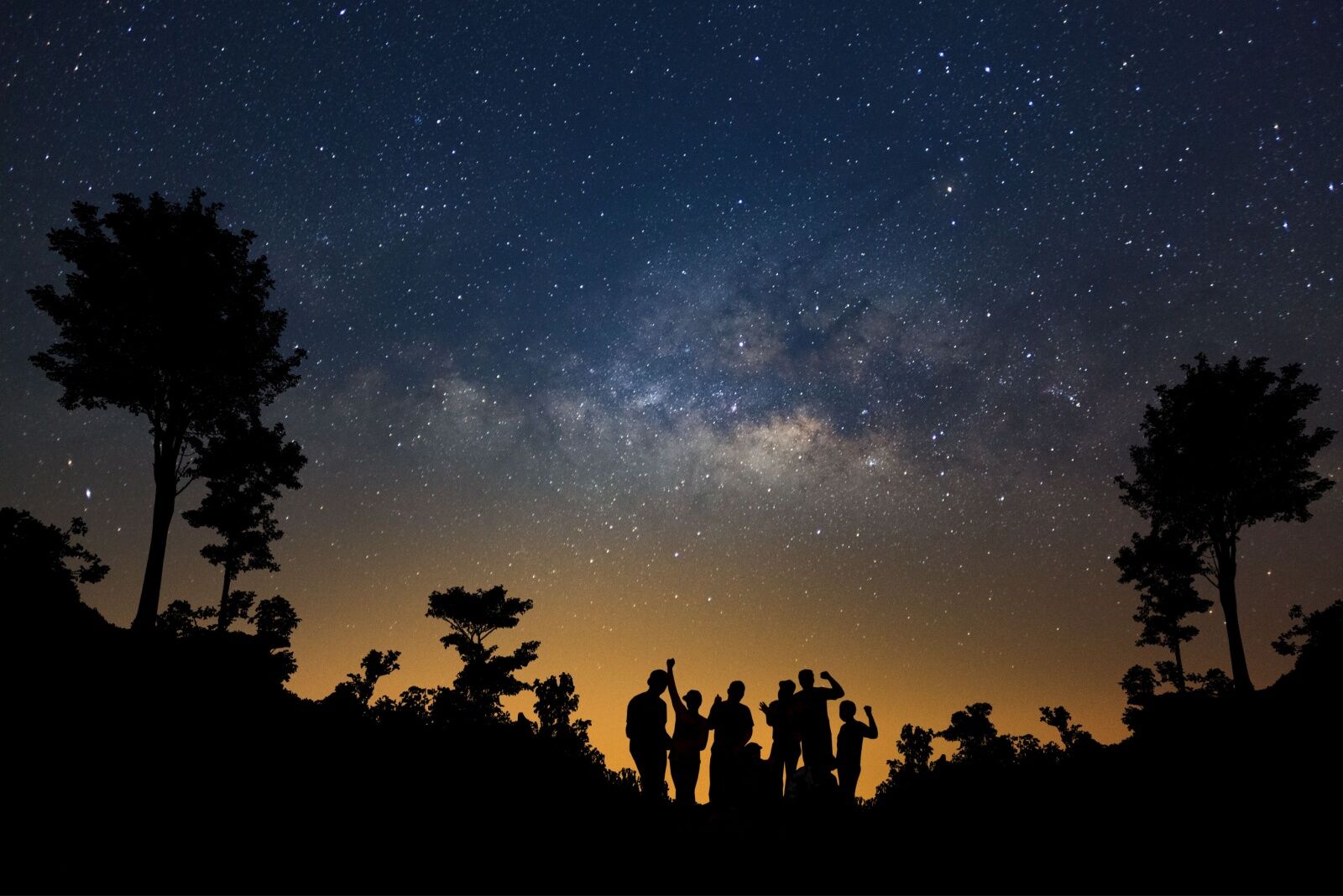
Photo: sripfoto/Shutterstock
Night sky events and festivals at national parks offer a rare opportunity to connect with the cosmos while surrounded by some of the US’s most breathtaking landscapes. Many national parks are also official Dark Sky Parks, offering clear skies free from urban light pollution.
Some events are hosted by national parks and include just activities, while others are multi-day events hosted at hotels and resorts just outside park boundaries. At most national park night sky festivals, attendees can use high-powered telescopes guided by experts, and sign up for evening activities like night hikes and walks. Many festivals also include educational presentations led by astronomers, scientists, park rangers, and guest speakers, diving into topics like astrophysics, the history of constellations, and the importance of preserving dark skies. Workshops on astrophotography and constellation viewing are usually available, and often, there are daytime activities for families, like art classes and kid-friendly crafts.
If you can’t travel to one of the astronomy festivals in national parks listed below, try checking the park website’s event calendar anyway. Many of the parks below have astronomy-focused events through the year, like outdoor lectures and full moon walks.
Death Valley Dark Sky Festival
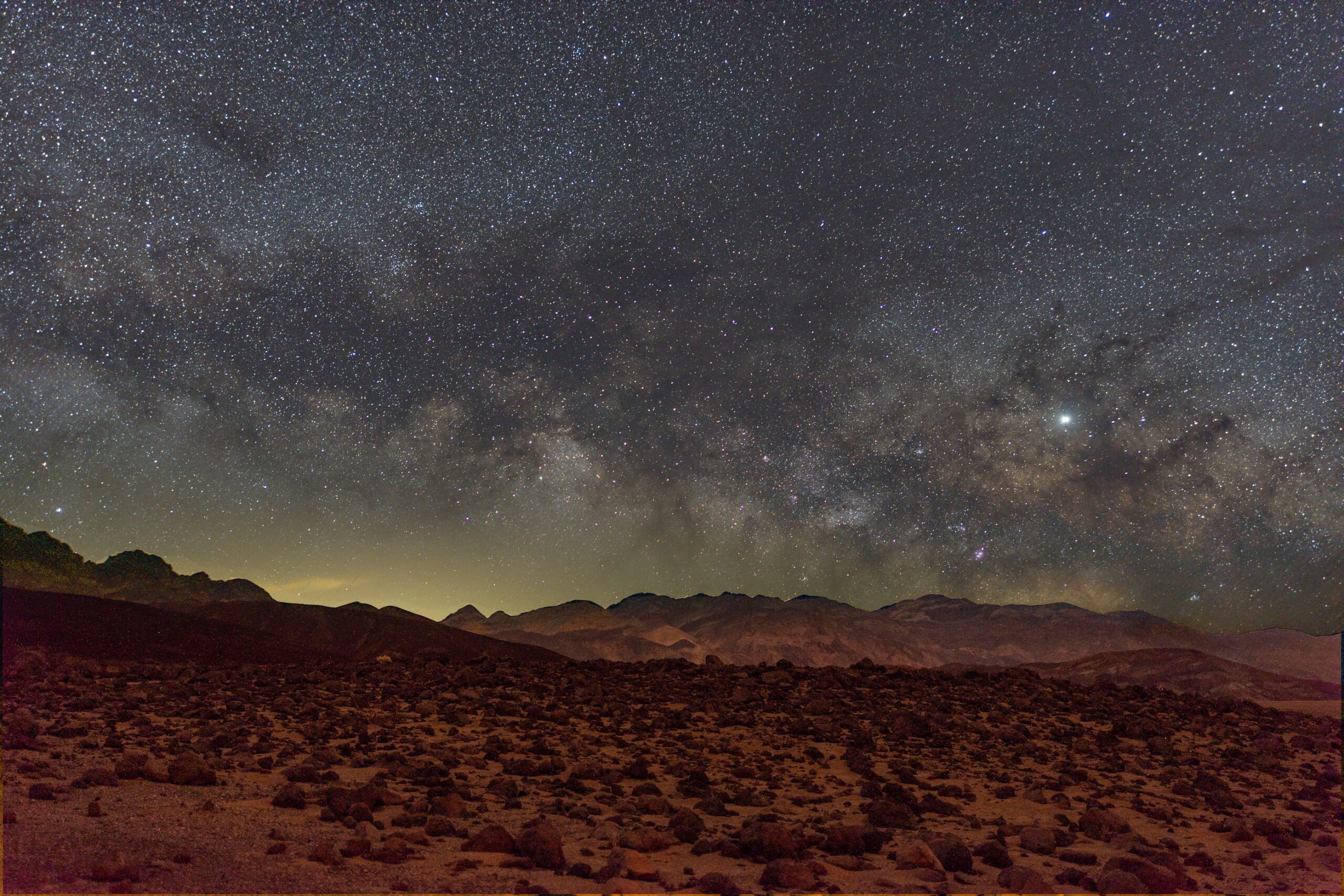
Photo: Death Valley National Park/Public Domain
- Dates: February 21–23, 2025
- Location: Death Valley National Park, California/Nevada
- Ticket cost: Free with park admission
Known for its unparalleled dark skies, the Death Valley Dark Sky Festival offers a weekend of celestial wonders in one of the best stargazing locations in the US. Each night features expert-led astronomy programs, including telescopes to see views of planets, star clusters, and nebulae. Educational presentations delve into astrophysics, the history of the cosmos, and the importance of preserving dark skies, and for those wanting an immersive or more active experience, guided hikes under the stars offer the chance to explore the unique landscape illuminated by starlight. Family-friendly activities like interactive workshops and constellation storytelling in the early evening make it accessible for all ages.
Grand Canyon Star Party
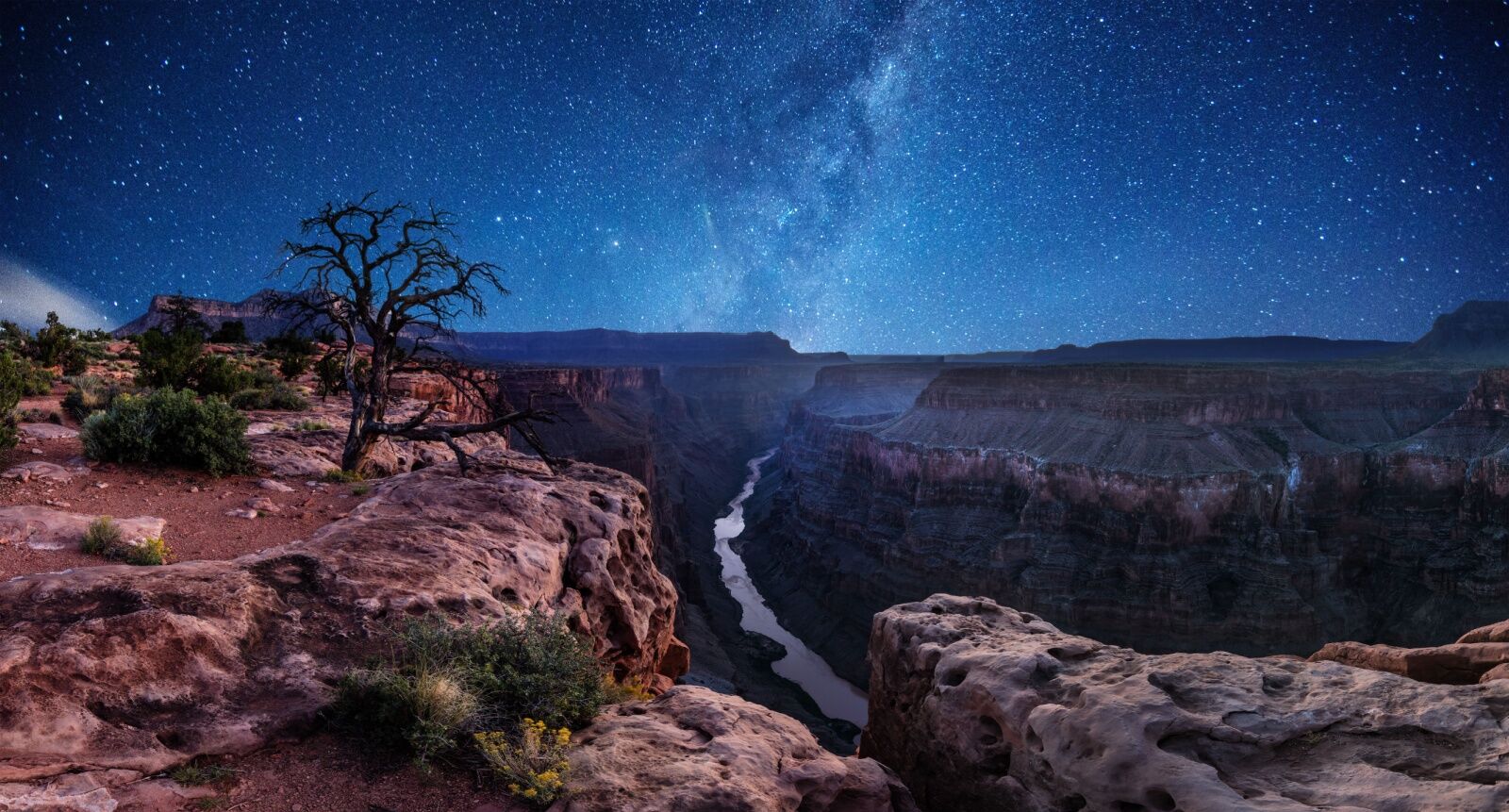
Photo: Alexey Suloev/Shutterstock
- Dates: June 21-28, 2025
- Location: Grand Canyon National Park, Arizona
- Ticket cost: Free with park admission
Spanning both the South and North Rims, the Grand Canyon Star Party offers a full week of night sky exploration each June. Amateur astronomers set up telescopes for public use, giving visitors a chance to observe celestial objects up close. Nightly presentations by experts provide context to what you’re seeing, from the rings of Saturn to distant galaxies. Supported by astronomy groups as well as the national park itself, the event is as much about education as it is just taking a moment to look up.
There is a host of new exciting glamping lodges around the Grand Canyon, many of which have a focus on stargazing, so 2025 could be an ideal year to attend this fan-favorite park event. Night sky viewing usually happens from around 9 to 11 PM, so you’ll have plenty of time to hike or play outdoors during the day.
ASTROCON 2025
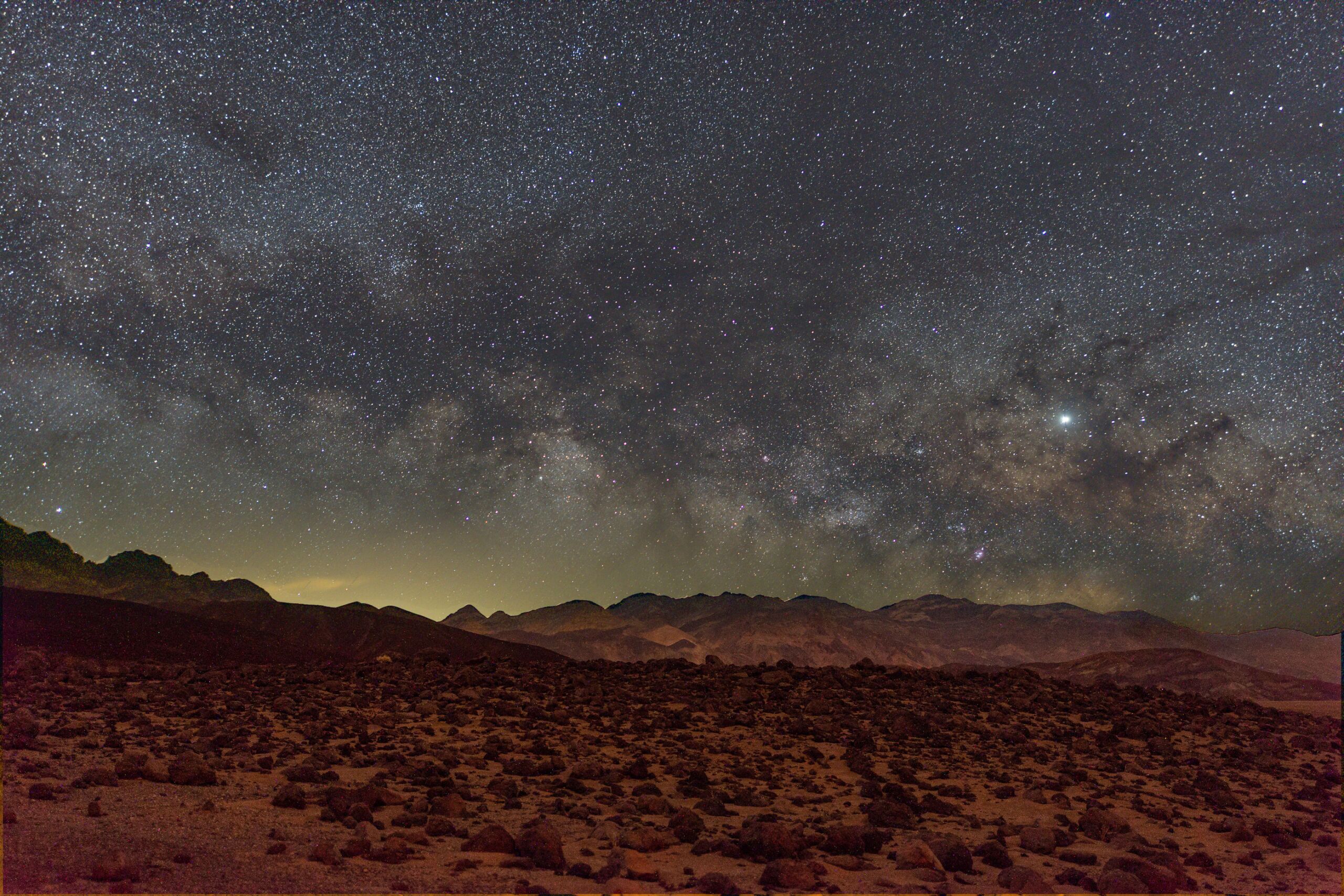
Photo: Colin D. Young/Shutterstock
- Dates: June 25–28, 2025
- Location: Bryce Canyon National Park, Utah
- Ticket cost: $100 for one person, $165 for two
Set in the dramatic landscapes of Bryce Canyon National Park, ASTROCON 2025 is a popular event for avid stargazers and amateur astronomy enthusiasts. It’s organized by the Astronomical League and includes talks and workshops led by experts in the field. A large component of ASTROCON is photography and art, and attendees can take classes ranging from beginner astrophotography to journaling to night sky sketching. Most events are held in and around Bryce Canyon National Park, but the actual event is headquartered at Ruby’s Inn, just a mile or so from the park entrance. Discounted room rates are available if you don’t want to get your own place in the desert.
Badlands Astronomy Festival

Photo: Wick Smith/Shutterstock
- Dates: July 18-29, 2025
- Location: Badlands National Park, South Dakota
- Ticket cost: Free with park admission
This astronomy festival is held against the dramatic backdrop of the otherworldly formations of the Badlands, with telescope viewing and expert-led evening presentations by the National Park Service Night Sky Program, plus guest astronomers. Daytime activities at the Badlands Astronomy Festival usually include interactive workshops and solar observation programs, and at night, stargazers can join constellation tours and night sky photography sessions. The festival highlights the importance of preserving natural darkness and is a unique way to spend time in the landscape at night. If you’ve never considered taking a trip to Badlands National Park, 2025 may be the year to reconsider that. It’s rarely ever crowded, and is know for being one of the most suprising parks to visitors — in a good way — in the entire national park system.
Great Basin Astronomy Festival
- Dates: September 18–20, 2025
- Location: Great Basin National Park, Nevada
- Ticket cost: Free with park admission
It’s hard to say enough good things about how amazing the night sky is at Great Basin National Park — or how welcome it can be to find a national park in the middle of summer that doesn’t have crowds. That said, you’ll probably want to reserve a campsite if you visit during the Great Basin Astronomy Festival, as it’s well-known for being one of the best in the country.
It combines both of those selling features, taking advantage of its designation as an International Dark Sky Park with stargazing events, astronomy 101 presentations, and telescope access for attendees. Workshops on night sky photography and constellation tours give visitors a chance to learn hands-on skills, and days are filled with opportunities to use solar scopes and activities for kids and families. Great Basin’s remote location guarantees a pristine view of the Milky Way, perfect for both casual observers and astrophotography enthusiasts, even without any telescopes or tools. You can also tour the Great Basin Observatory during the festival, though you’ll need a separate reservation for that (so keep an eye on the event website to see when registration begins.)
Dakota Nights Astronomy Festival
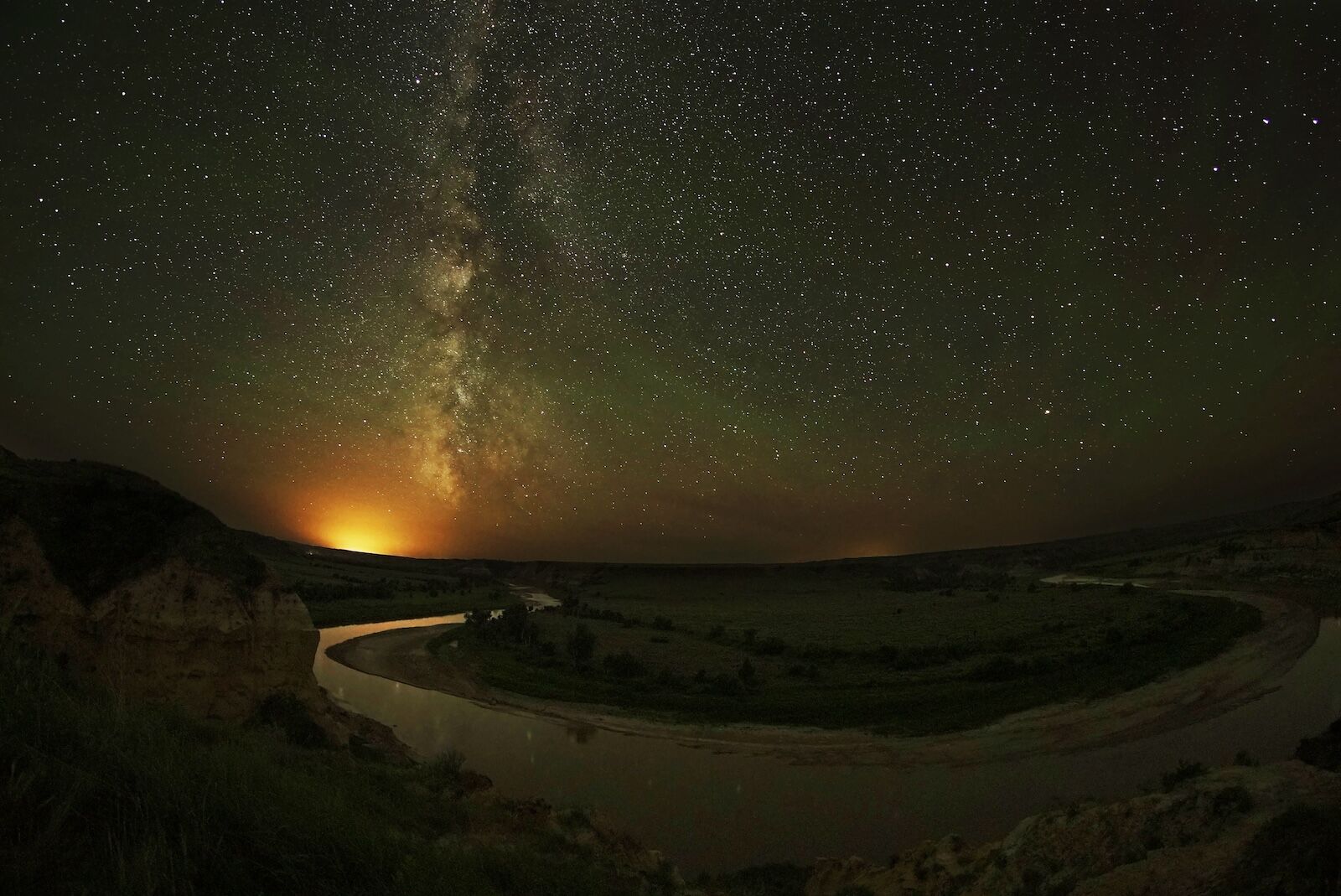
Photo: Theodore Roosevelt National Park/NPS/Jeff Zylland
- Dates: September 19-21, 2025
- Location: Theodore Roosevelt National Park, North Dakota
- Ticket cost: Free with park admission
The Dakota Nights Astronomy Festival is a family-friendly festival with a focus on STEM, including including rocket building and launching, solar system hikes, and evening telescope viewings. Presentations by nationally recognized speakers and NPS rangers provide insight into astronomy and the importance of preserving dark skies, and with its vast prairies, minimal light pollution, and clean air (for now), Theodore Roosevelt National Park offers a serene setting for stargazing. It’s about a five-hour drive from Badlands National Park in South Dakota, if you want to combine the two.
Rocky Mountain Night Sky Festival
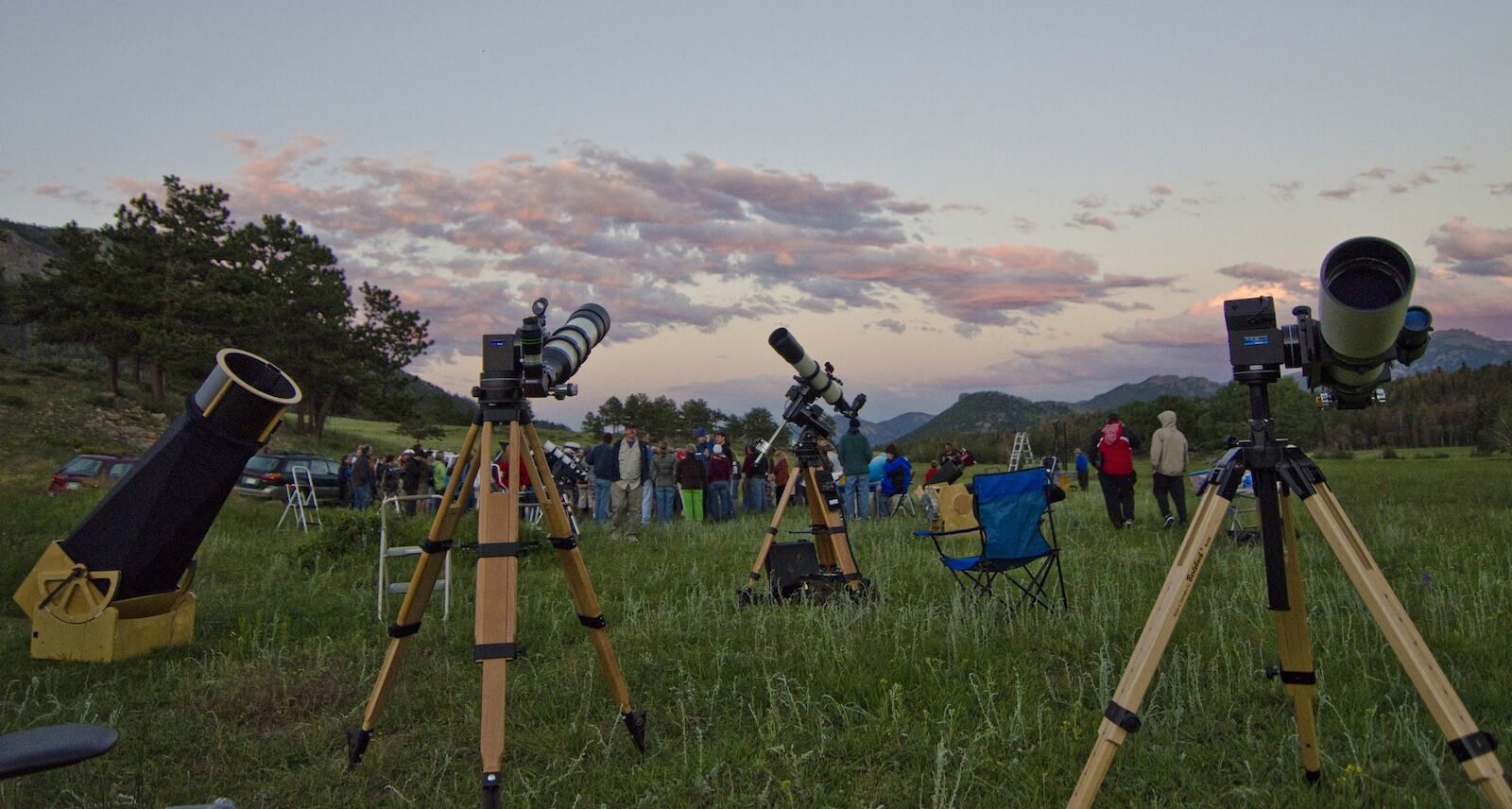
Photo: Rocky Mountain National Park/Public Domain
- Dates: TBD (late July or early August)
- Location: Rocky Mountain National Park, Colorado
- Ticket cost: Free with park admission
This festival celebrates Rocky Mountain National Park’s commitment to preserving natural darkness and includes activities like stargazing sessions with telescopes, educational programs, and talks by professional astronomers. The park’s high-altitude location ensures some of the clearest night skies in the country, perfect for spotting distant galaxies or meteor showers. The festival is possible thanks to efforts from a team dedicated just to ensure light pollution stays away from the popular national park, called Defenders of Darkness.
If you can’t make it to festival, another night sky event in 2025 you may want to attend in Colorado is the park’s annual Night Sky Photography Class in September, hosted by the Rocky Mountain Conservancy.
Jasper Dark Sky Festival
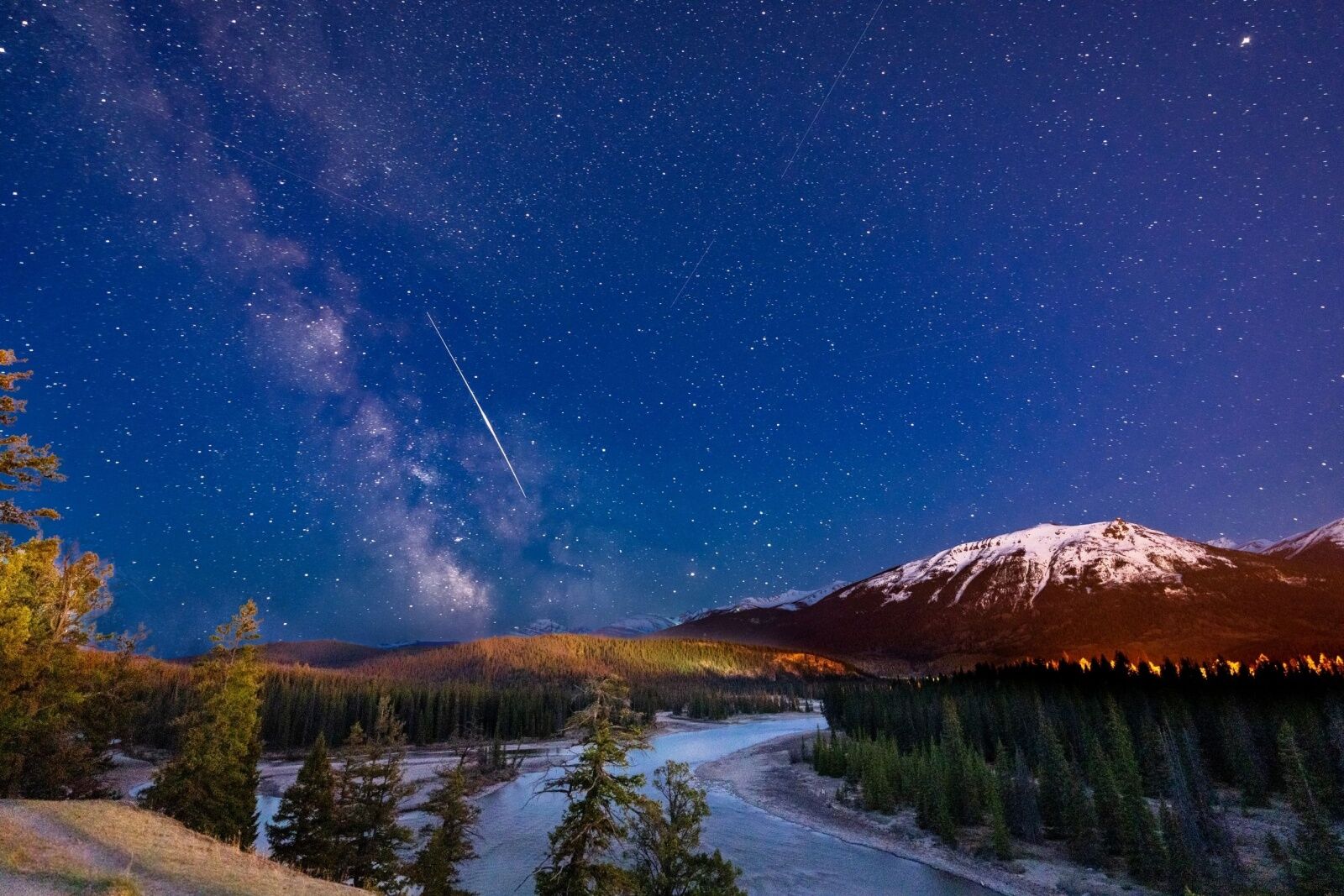
Photo: Shawn.ccf/Shutterstock
- Dates: October
- Location: Jasper National Park, Alberta, Canada
- Ticket cost: Priced per activity, ranging from free to $119 CAD
This night sky festival is always one of the biggest in North America, celebrating astronomy, science, and the natural beauty of one of the world’s largest accessible dark sky preserves. It runs for two or three weeks, with a mix of both the usual stargazing programs (like nighttime lectures, guided stargazing, and yoga under the stars), as well as more community-focused events in the small town of Jasper. That includes night sky painting classes, symphonies under the stars, astronomy-themed improv shows, “After Dark” trivia, solar scope sessions, and much more. Rather than buying one ticket for the festival, you’ll just buy tickets for whatever event(s) you want to attend. Jasper gets busy (not as busy as nearby Banff, but still busy) so try to make your hotel or campground reservations as far in advance as possible.
Major astronomy events and festivals around the world in 2025
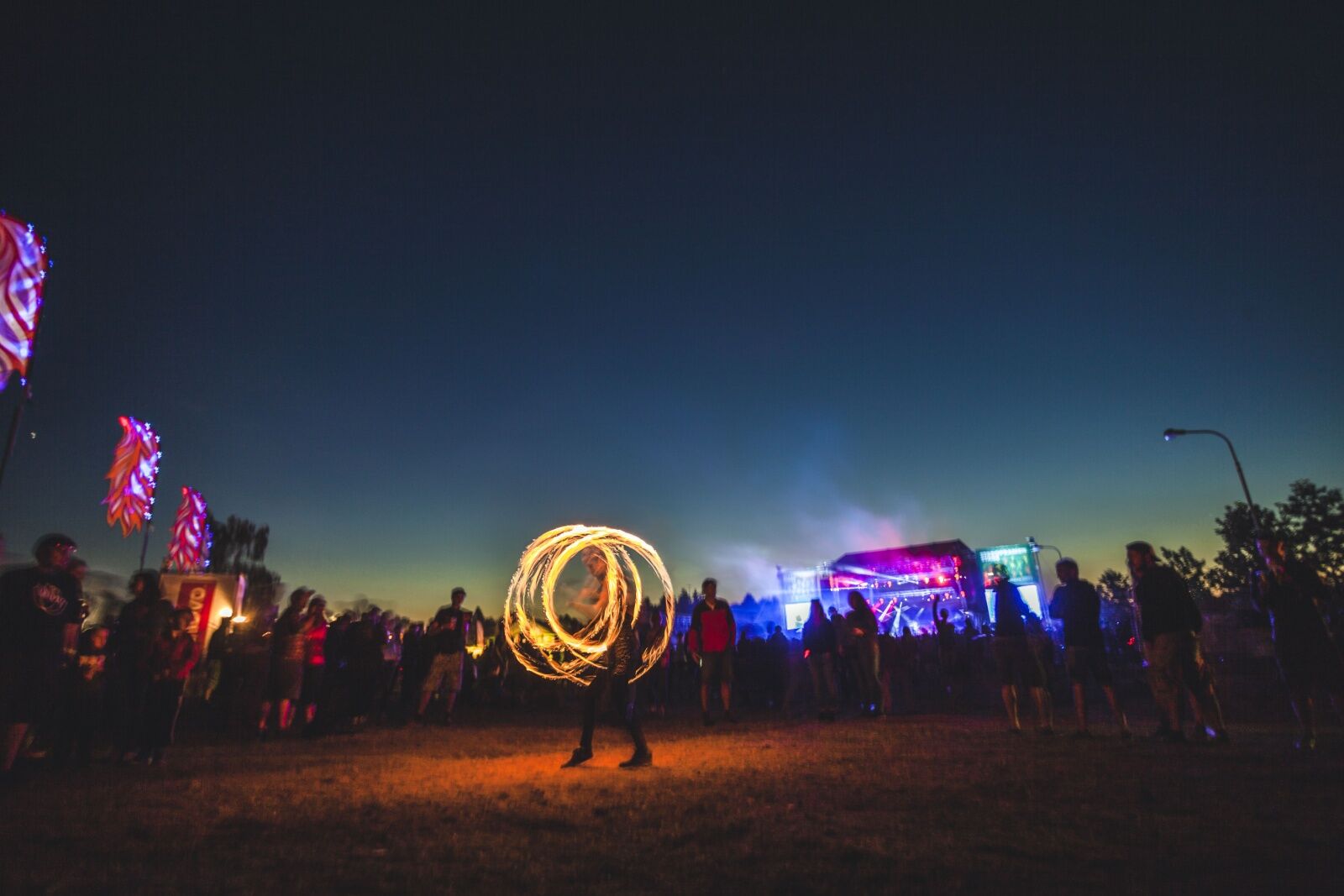
Photo: JakubCervenka/Shutterstock
You don’t have to wait for a celestial event to start staring at the sky — or to start celebrating how amazing our planet is after dark. There are hundreds of night sky festivals and astronomy parties around the world each year, and 2025 is no exception.
If you just want to attend a festival for a few hours and see what the night hype is all about, do an online search for parks around you, and check their events calendars. Many state parks have amazing local stargazing programs, and universities, observatories, and museums often also host single-day events. But if you’ve got the travel bug and want to take advantage of new flight routes and amazing new hotels around the world, consider planning travel around one of the epic stargazing festivals of 2025 below.
Upper Peninsula Dark Sky Festival
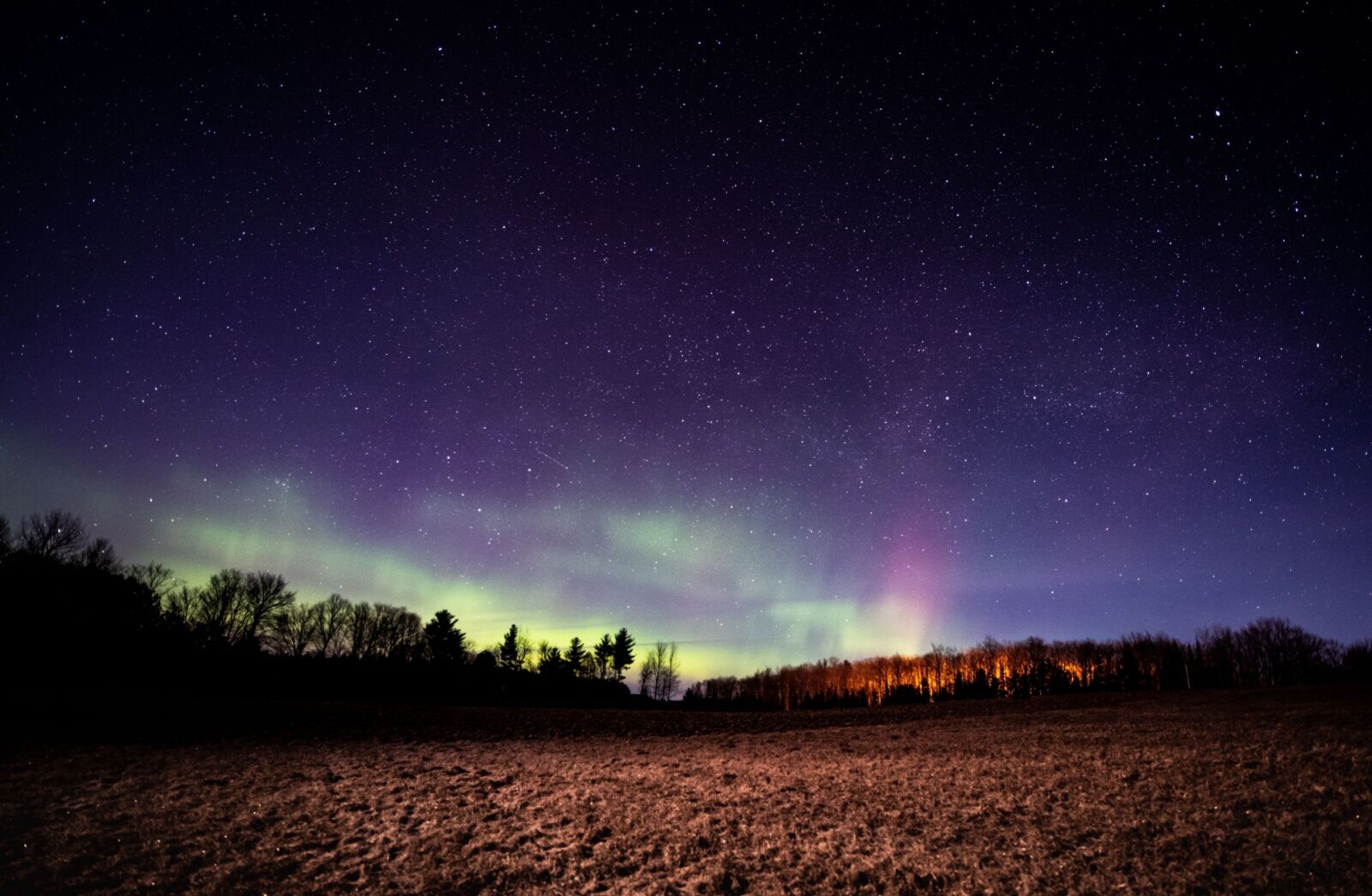
Photo: Valine Kobasic/Shutterstock
- Dates: April 24-26, 2025
- Location: Keweenaw Dark Sky Park, Michigan
- Ticket cost: $250 (plus lodging)
The annual Upper Peninsula Dark Sky Festival in Michigan falls smack in the middle of International Dark Sky Week, scheduled for April 21–28, 2025. It’s a week when groups around the world work to raise awareness about light pollution and the importance of protecting natural nightscapes, led by DarkSky International.
Michigan’s 2025 dark sky festival will be based at Keweenaw Mountain Lodge, inside the Keweenaw Mountain Dark Sky Park. Registration includes access to all the events as well as hosted lunches on Friday and Saturday, but you’ll need to book your lodging separately (either at the lodge, or a home rental nearby). The full event schedule for 2025 hasn’t been announced, but 2024’s event included guided stargazing, a full calendar of daytime lectures and classes, and outdoor events after dark. The UP (Upper Peninsula) has some of the darkest skies in the US, and is one of the few places in the US where you can see the northern lights with some regularity. So even if you can’t travel to attend the April 2025 dark sky event, you may want to consider booking a trip later in 2025, especially as the aurora borealis is expected to peak this year.
Starmus La Palma
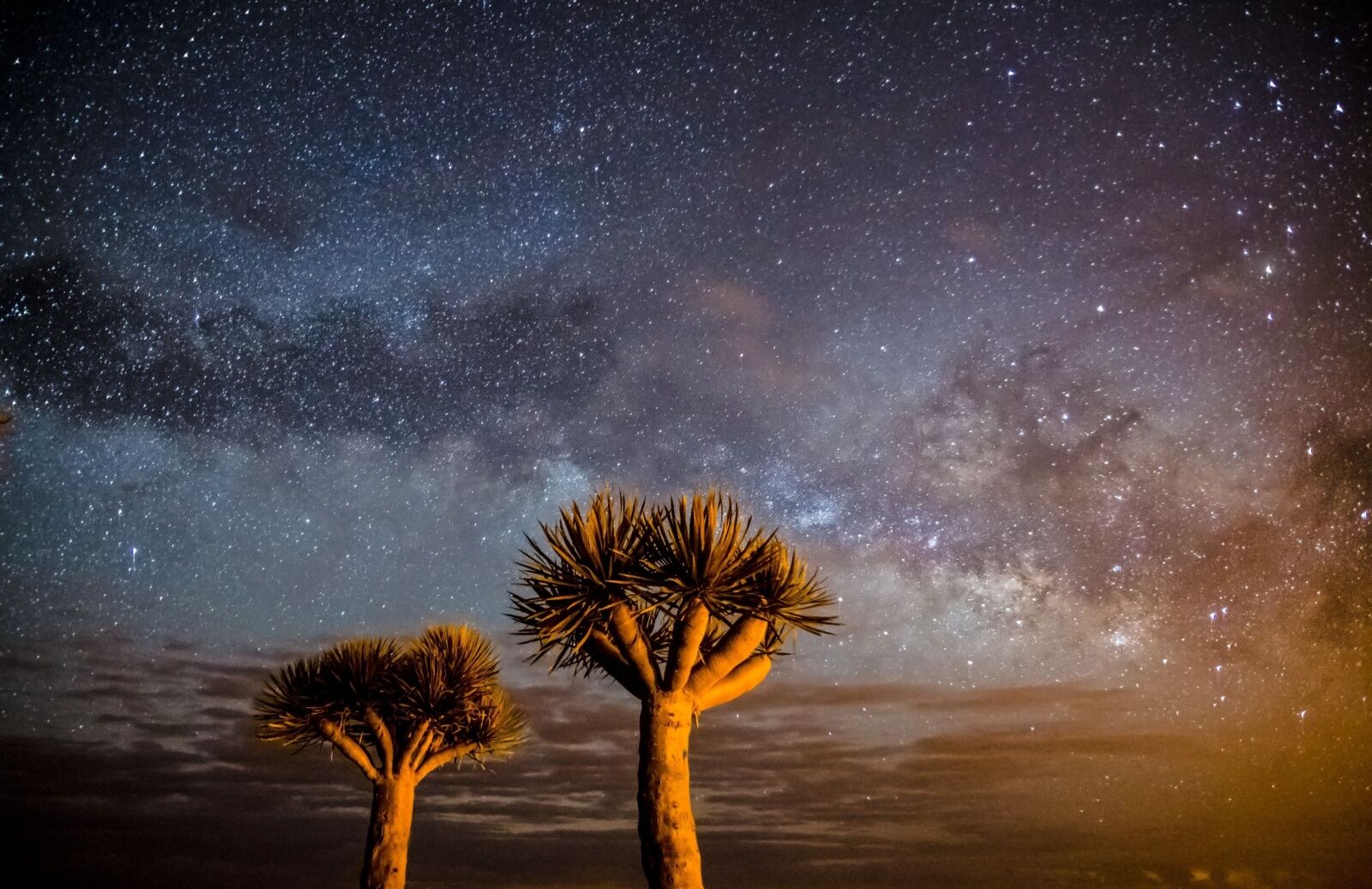
Photo: Jacinto Marabel Romo/Shutterstock
- Dates: April 25-29, 2025
- Location: Canary Islands, Spain
- Ticket cost: Free
The Starmus Festival (a combination of “stars” and “music”) is a global celebration of science, art, and music. It’s attended by the greatest minds in all three disciplines, including Jane Goodall, Brian May, Nobel Laureates, and astronauts like Chris Hadfield and Anousheh Ansari. The event has two Starmus Camps in Santa Cruz de La Palma and Los Llanos de Aridane, each with space for exhibitions, workshops, shows, music, and performances. There’s also a four-day program of keynote speeches and panel discussions featuring some of the world’s most renowned scientists, but the attendance capacity is limited, so you’ll have to apply to attend. However, everything else is open to anyone who wants to attend, and those lectures are live-streamed at the camps.
Hanging out and attending the events at the camps is completely free, but you’ll need to plan your own lodging around La Palma, as that’s not part of the camp experience. More event details (as well as registration info) should be coming in January 2025.
Vegkop Star Party
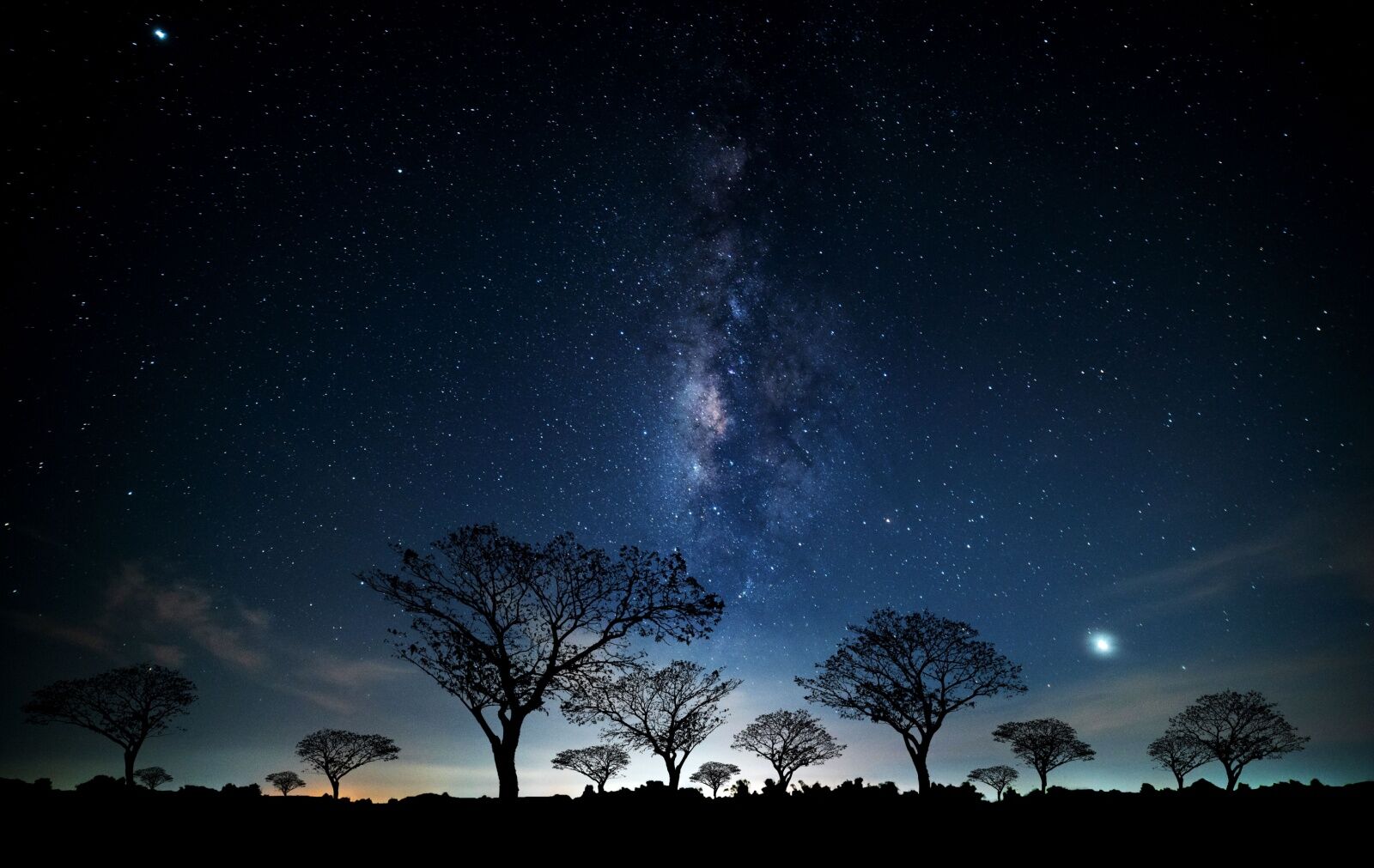
Photo: Thammanoon Khamchalee/Shutterstock
- Dates: April 25-29, 2025
- Location: Heilbron, South Africa
- Ticket cost: R50 (about $3) to attend, plus camping fees
The Vegkop Star Party is an annual gathering of astronomy enthusiasts in Heilbron, South Africa (about a 90-minute drive south of Johannesburg). That part of the country is renowned for its pristine dark skies, offering an excellent environment for stargazing and astrophotography. The party takes place over a long weekend and is hosted at a campground, ensuring attendees are fully immersed in nature. Campgrounds are inexpensive — usually around $15 USD per night.
Evening stargazing sessions are the highlight, and veteran attendees usually set up telescopes and are happy to share their expertise and discoveries. For beginners, experienced volunteers are on hand to assist with telescope setup and provide guidance. During the day, there are workshops and presentations led by experts in the field. Because of the event’s location, it would tie in well with a longer safari or wildlife focused trip to South Africa. You could either grab a quick flight or make the drive to Kruger National Park (about four hours) or visit any of the game reserves closer to the city. You’ll also find lots of multi-day wildlife and safari tours that leave from Johannesburg, in case you don’t want to bother with driving.
Astronomy Festival on the National Mall
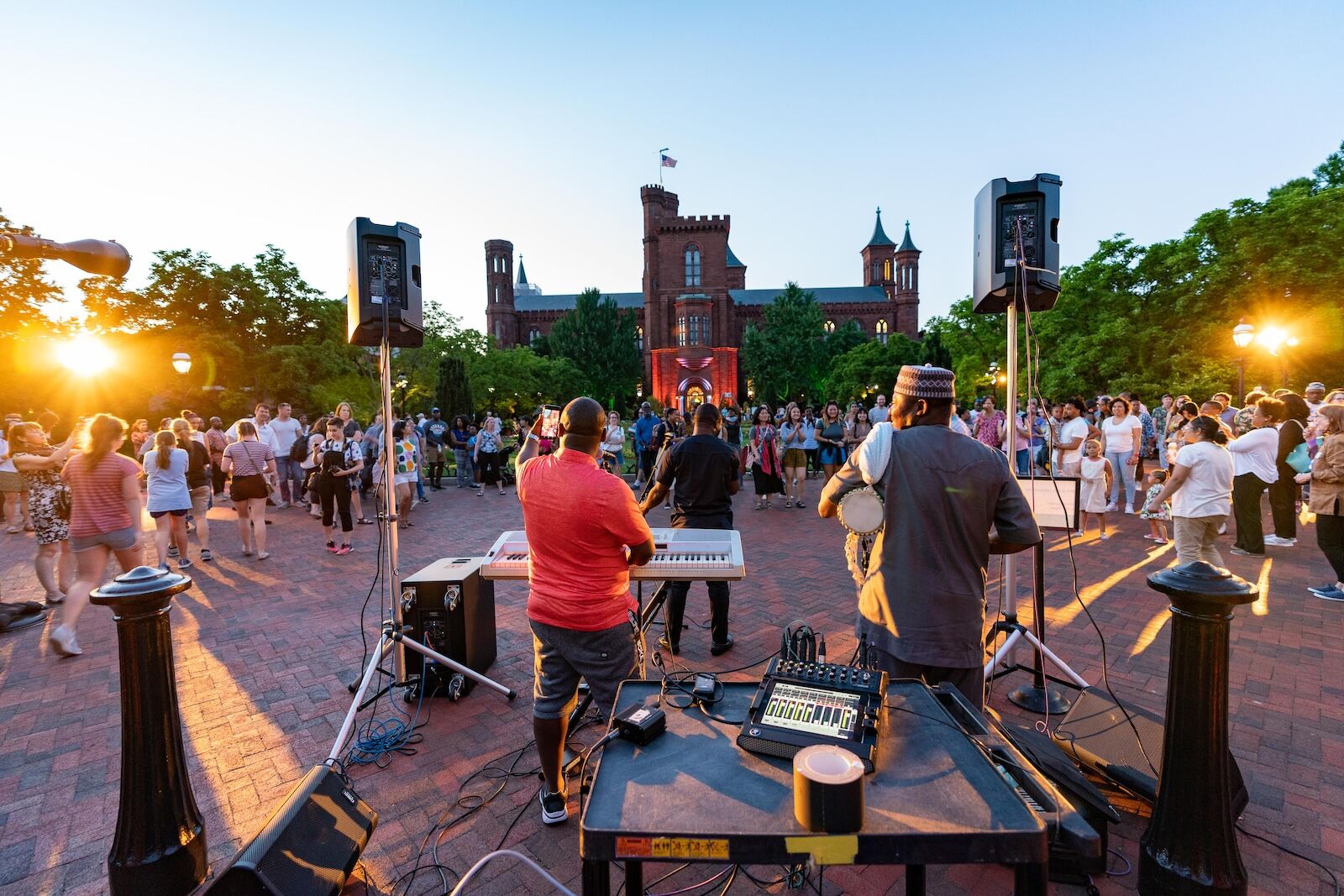
Photo: Smithsonian Institute/Public Domain
- Dates: Usually the Saturday before/after the summer solstice
- Location: Washington, DC
- Ticket cost: Free
The Astronomy Festival on the National Mall is an annual event in Washington, DC, held in partnership with Hofstra University. Unlike many other 2025 astronomy festivals, this one has a huge daytime component. The festival features solar, optical, and radio telescope observations; hands-on activities; demonstrations; and opportunities to interact with astronomers on the National Mall. It’s part of the Smithsonian Solstice Saturday, when many of the most popular museums in DC stay open late and host additional events and programming. There are dozens of events, some of which require registration, so bookmark the event’s website if you plan to attend.
If you want to visit the National Air and Space Museum while you’re in town (as well as several of the other Smithsonian museums), you’ll need to get a free timed entry ticket in advance online.
Winter Solstice Festival
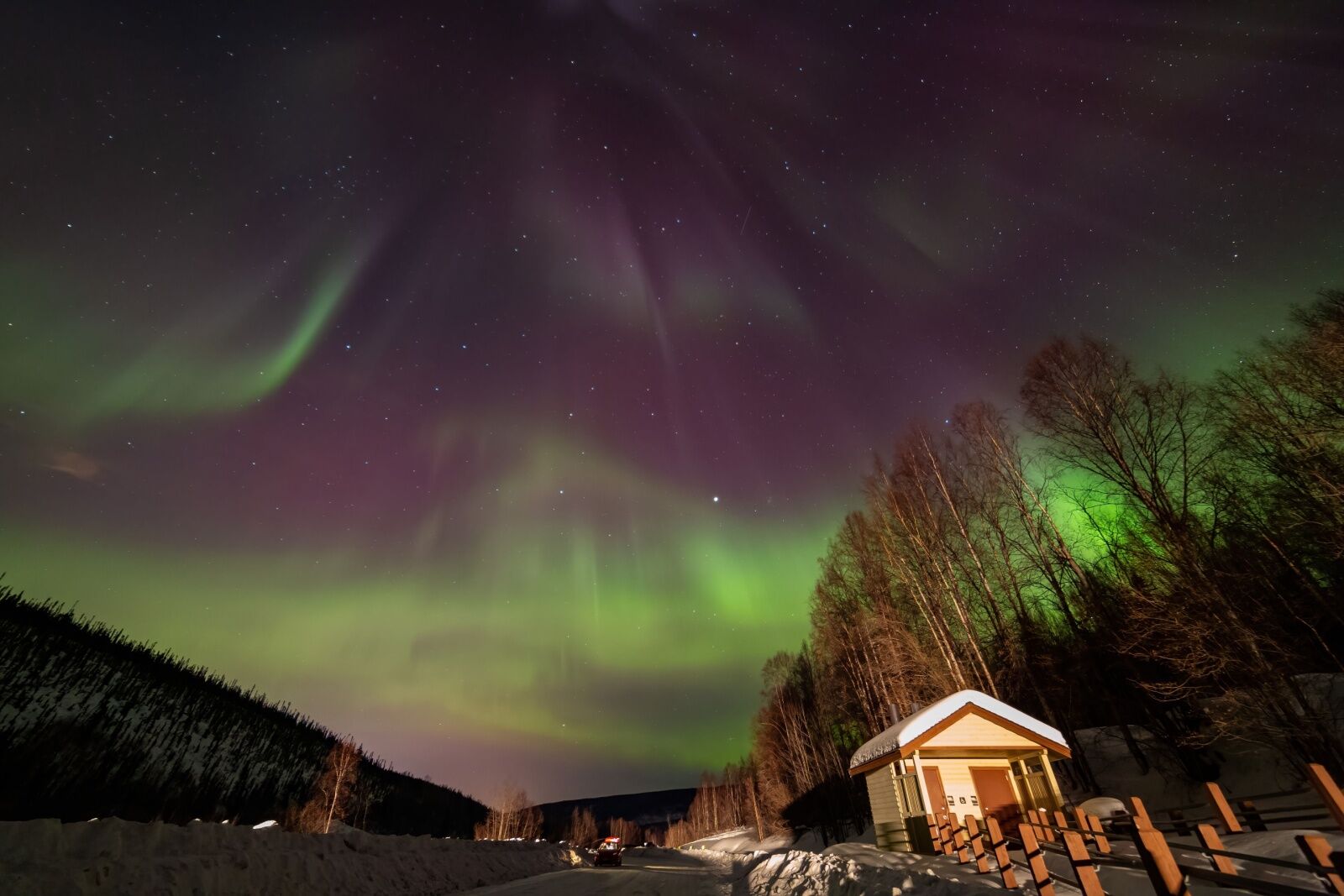
Photo: Kit Leong/Shutterstock
- Dates: Usually around Dec. 21
- Location: Fairbanks, Alaska
- Ticket cost: Free
Most people visit Alaska in the summer, but astronomy buffs know it’s winter when the state shines — literally, in some cases. Alaska has some of the clearest skies in the country and Fairbanks is the epicenter of night sky viewing in the state, thanks to its reputation as the aurora borealis capital of the world. You can see the northern lights with some regularity for nine months out of the year, starting in September.
If you want to visit Fairbanks in winter, consider timing your visit with the Winter Solstice Festival. It’s an annual community event that celebrates the shortest day of the year and the return of longer daylight hours with events like evening light walks, a “Moose on the Loose” scavenger hunt, dog sled rides, a holiday bazaar, fireworks, and more. While you only need a few hours in town to check out the event, you’ll want to schedule a few days to spend in Fairbanks. You can fly into Anchorage and take the Aurora Winter Train to Fairbanks, then stay in an outdoorsy Airbnb. Alternatively, there are a few gorgeous resorts near the town designed to make aurora-viewing easier, like the heated clear domes of Borealis Basecamp, or the alpine chalets and cabins at Aurora Borealis Lodge.
